News
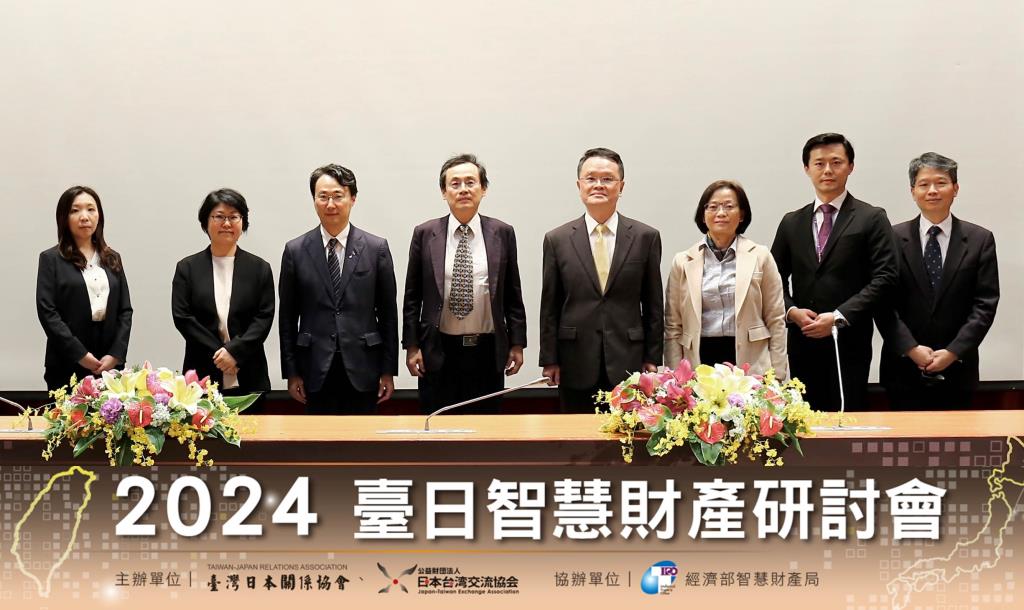 61
612024 Taiwan-Japan Intellectual Property Symposium Concludes to Widespread Participation and Support
The 2024 Taiwan-Japan Intellectual Property Symposium, a collaborative effort of the organizers Taiwan-Japan Relations Association and Japan-Taiwan Exchange Association, in partnership with Taiwan Intellectual Property Office (TIPO), opened on February 2, 2024 (Friday) at the NTU College of Law Tsai Lecture Hall. Remarks were delivered by distinguished guests including Taiwan-Japan Relations Association Deputy Secretary-General Ching-Hung Lin, Japan-Taiwan Exchange Association Deputy Representative Dr. Takashi Hattori, Taiwan Intellectual Property Office (TIPO) Director-General Dr. Cheng-Wei Liao. And also, Japan Patent Office (JPO) Director-General of Policy Planning and Coordination Department, Mr. Mikiharu Shimizu made some closing remarks which summarized the main points of the symposium.Speakers invited to the symposium included Director Masashi Omine from JPO Design Registration System Planning Office, Chief Judge Huei-Ju Tsai from the IP and Commercial Court, Senior Patent Examiner Ming-Feng Hsu from TIPO Patent Administration & Planning Division, and IP Lawyer Kaoru Kuroda from Abe, Ikubo & Katayama. Topics covered the protection of digital designs under the Japanese Design Act, the relationship between the metaverse and design patents, case studies of the utilization of design patent rights in Japan, and judicial practices of design patents in Taiwan.First, Director Masashi Omine gave an introduction to Japan’s Design Act, recent trends in design applications related to images, buildings, and interior decorations, as well as key revisions in the practical application and Examination Guidelines for Designs Including a Graphic Image. Senior Patent Examiner Ming-Feng Hsu then discussed international case studies related to the metaverse and practical protection of cross-disciplinary design applications, i.e. design patent infringement case against the Detroit Red Wings, and the invalidation of Candy Crush virtual candies in the EU.In addition, IP Lawyer Kaoru Kuroda from Japan shared examples of the utilization of design patent rights in Japan, highlighting the criteria for determining design patent infringement. Finally, Chief Judge Huei-Ju Tsai from the IP and Commercial Court used specific judicial cases in Taiwan to explain the process of design evaluation in the courts, including the overall observation, comparison of "common features" and "differential features," methods for ordinary consumers to determine whether they are similar, and key points to consider in visual effect judgments.The 2024 symposium garnered over 140 participants from the industry, government, and academia, who engaged in extensive exchange with experts from both Taiwan and Japan. By providing detailed information on regulations and relevant practices, TIPO hopes to facilitate better public understanding for the design patent regime and judicial practices of Taiwan and Japan. TIPO also hopes that it will serve as a reference for Taiwanese companies when applying for design patents and setting up patent portfolios in Japan. 62
62Interview Series on Outstanding Female Leaders in the Field of IP in Taiwan is Now Featured on the TIPO Website!
In the modern era of the knowledge economy, IP such as patents and copyrights, which highlight innovation and creativity, have become crucial assets for both individuals and businesses. The widespread gender disparity we see worldwide is especially stark in the field of IP. Regardless, both men and women contribute significantly to the field of IP.For insights into the career development of female IP professionals in Taiwan, TIPO produced a series of interviews entitled “Outstanding Female Leaders in the Field of IP in Taiwan.” The series is honored nine outstanding women, including Economic Minister Mei-Hua Wang, Chief Judge Huei-Ju (Grace) Tsai from the IP and Commercial Court, Professor Su-Hua Lee from the NTU College of LAW, Attorney Grace Shao from Baker & McKenzie, and Attorney Joyce I. Ho from Tsar & Tsai Law Firm.Three outstanding women from TIPO were also interviewed: Deputy Director General Yuh-Ying Chang, Chief of the Trademark Division Hu Ping-Lun, Deputy Chief of Patent Examination Division II Li Dong-Shiow, and Deputy Chief of Patent Dispute Examination Division Chao Ching-Ling.This series of interviews with outstanding female leaders in the field of IP demonstrates that as long as women are brave enough to rise to the challenge, they can excel even in fields traditionally dominated by men, such as science, engineering, and technical fields. Through interdisciplinary learning and practical experience in areas like technology, law, and management, women can leverage their unique attributes to forge successful careers and make a path for themselves.The Outstanding Female Leaders in the Field of IP in Taiwan interview series is now featured on TIPO’s official website (in the gender equality section). Through this series of interviews, we hope to inspire women to breakthrough gender barriers and chase their dreams, as well as to encourage more women to begin a career in IP.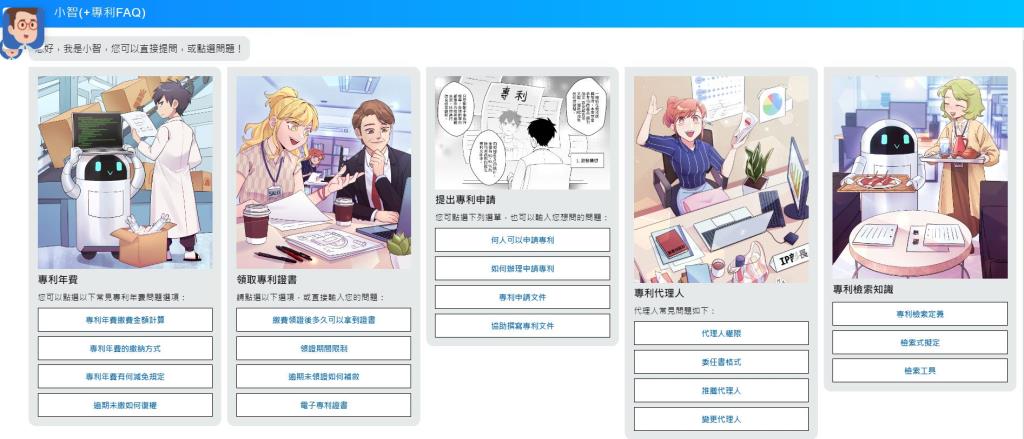 63
63TIPO’s AI Chatbot “Tipo” Goes Live on Dec. 5!
TIPO is proud to introduce “Tipo,” our new AI chatbot, which went live on December 5. Tipo provides 24/7, real-time patent consultation services to meet the needs of creators, who need quick and immediate answers.Since establishing the online service center in August 2011, TIPO has been offering consultations to the public for electronic applications, online payments, and patent application procedures. TIPO fields almost 40,000 calls annually, demonstrating its unwavering commitment and service.As such, TIPO has amassed years of customer service experience and an extensive FAQ database for patent inquiries. On the basis of this foundation, TIPO introduced the AI customer service chatbot Tipo to provide rapid responses to common patent questions, allowing applicants access to answers anywhere and anytime. 64
64TIPO Releases “Report on Key Technologies and Patent Analysis for Waste Management in the Global Semiconductor Industry” for Public Reference
ESG (Environmental, Social, and Governance) is currently one of the hottest topics in the semiconductor industry, closely related to the concept of the circular economy. In the traditional linear economy, resources are obtained, transformed into products, used, and eventually discarded as waste. Managing and recycling waste or reducing resource waste in the manufacturing process is crucial for the semiconductor industry's circular economy (or ESG). For instance, purifying waste resources into semiconductor-grade chemicals and reintegrating them into the manufacturing process to achieve sustainable goals through green practices.The report focuses on copper recovery, silicon slurry recovery, and hydrogen recovery within waste management in the semiconductor industry. Data is compiled and organized, and relevant patent trends are included within the report. Key technologies have also been selected for in-depth analysis. The aim is to provide insights and inspiration for the development of green circular economy practices in the domestic semiconductor industry.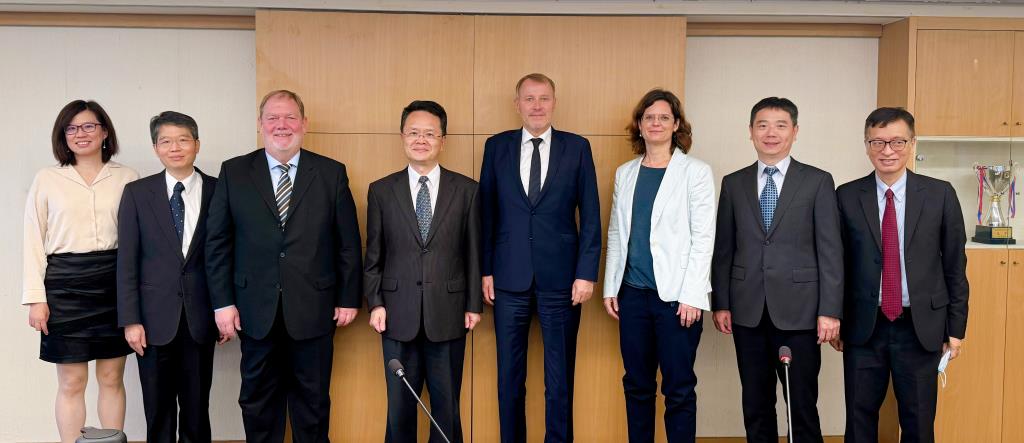 65
65TIPO Welcomes Experts from the German Patent Office (DPMA) to Taiwan
In November, TIPO welcomed experts from DPMA to visit Taiwan and conduct bilateral exchanges on intellectual property.Various topics were discussed, including the legislative framework and practices of the German utility model system. Unlike the German system, which originally aimed to protect creations with lower technical content and tangible shapes, the utility model patent system in Taiwan is widely used to protect inventors' patents.During the visit, three experts from DPMA, including Dr. Volker Rüger, Head of Central Unit - International Affairs, Mr. Jörg-Eckhard Dördelmann, Head of the Legal Division and Chief of the Utility Model Revocation Procedure Unit, and Ms. Antje Wielage, Head of the Utility Model Division and Chair of Cancelation Proceedings, delivered presentations on topics such as the German utility model system, practices, and case law, DPMA's measures in response to the EU’s Unitary Patent System that officially launched on June 1, 2023, and patent data retrieval.Experts from both sides discussed and exchanged views eagerly, contributing valuable insights for Taiwan's ongoing efforts to optimize its patent system.Furthermore, as part of efforts to deepen bilateral intellectual property exchanges between Taiwan and Germany, TIPO arranged a visit to Taiwan's ITRI Technology Transfer and Law Center. During the visit, DPMA experts were introduced to IP programs and services provided by ITRI to assist domestic SMEs, offering insights for the DPMA to strengthen IP support for German SMEs. 66
66US and Taiwan Signs MOU on the Secure Exchange of Patent Data
On November 22, 2023, Taiwan and the US signed the MOU on the Secure Exchange of Patent Data, streamlining and reducing the cost of patent priority claims for Taiwanese applicants who annually file over 20,000 patent applications in the United States.The annual number of patent applications filed by Taiwanese applicants in the United States has consistently been around 20,000 in recent years. The numbers rose a significant 6% from 2021 to 2022. The MOU aims to alleviate this burden by facilitating the secure exchange of priority documents between the Taiwan Intellectual Property Office and the United States Patent and Trademark Office (USPTO).The collaboration between Taiwan and the United States on the electronic exchange of priority documents began in 2016 through TIPO and USPTO’s bilateral discussions. Given the importance of information security, both confirmed details related to information equipment and transmission meticulously.After continuous efforts from both sides, the MOU was finally signed this year. This milestone in the deepening of our relations with the US follows the implementation of the Patent Prosecution Highway (PPH) project in 2011, and the signing of the MOU on Intellectual Property Rights Enforcement Cooperation in 2017.To create an environment conducive to international patent applicants, TIPO has launched electronic priority document exchange (PDX) program with Japan and South Korea in 2013 and 2016 respectively. Furthermore, the PDX programs were expanded to design patents with Japan and South Korea in 2019 and 2021 respectively. The recent expansion in PDX collaboration with the US shall greatly increase the convenience of Taiwanese applicants filing patent applications in the US, as well as for US applicants filing in Taiwan – a mutually beneficial arrangement.The MOU was signed by the Deputy Representative Johnson S. Chiang of Taipei Economic and Cultural Representative Office in the United States (TECRO) and AIT/W Managing Director Ingrid D. Larson.Following the signing, TIPO and USPTO will conduct verification tests on information systems. Upon the completion of information security equipment testing by both offices, the implementation start date will be publicly announced.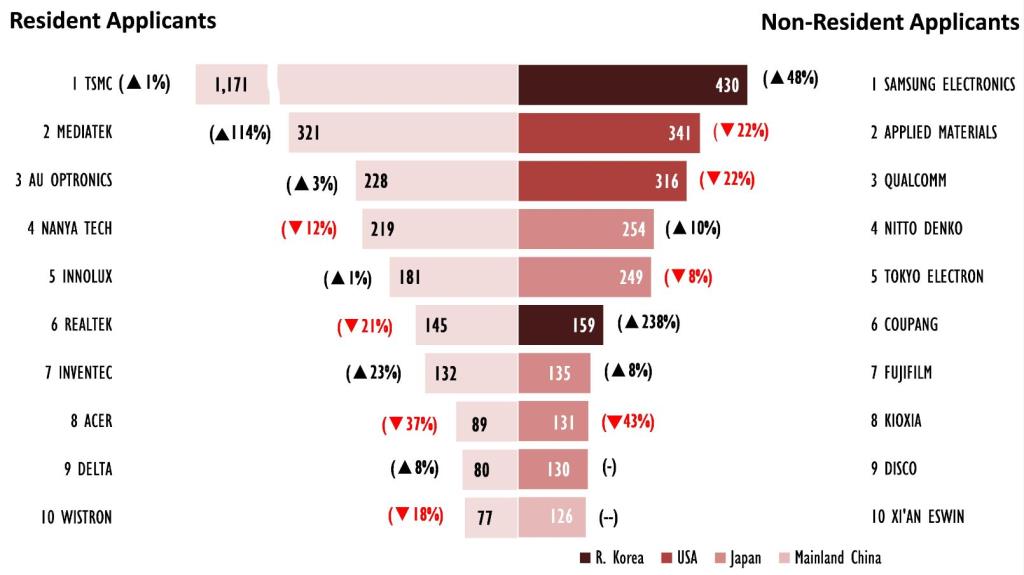 67
67TIPO’s Q3 2023 IPR Statistics Report
In Q3 2023, TIPO received a total of 18,310 patent applications (including invention, utility model, and design patents), marking a 1% increase over the same period last year. Of these, the number of invention patent applications (12,670) also grew by 1%. Trademark applications stood at 23,632 cases, with a drop of 7%. For invention patents, TSMC (443 applications) has topped the list for eight straight years among resident applicants, while Samsung Electronics (285 cases) leapt to the top of the list of all non-resident applicants. For trademarks, Taishin (264 applications) and Tencent (38 applications) ranked first among resident and non-resident applicants, respectively.Patent ApplicationsTIPO received 18,310 patent applications, most of which were invention patents (12,670) marking a slight increase of 1%, compared to the same period (Q3) last year. The number of applications for both utility model (3,782) and design (1,858) remained relatively unchanged. In addition, resident applications for invention patents went up by 1% and non-resident applications for overall patents grew by 1% to 14% (Table 1).Most of the top 10 resident applicants for invention patents saw double-digit growth. TSMC filed 443 applications, outnumbering other resident applicants for eight consecutive years. Delta (67 applications) saw the highest growth rate with 103%, and Nuvoton (62 applications) hit a new record high (Figure 2).In terms of resident applicants for design patents, CGUST (33 applications), the only university in the top 5 applicant list, claimed the top spot for the first time, setting its all-time-high record and seeing the highest growth rate with 313%. Delta (14 applications) rose rapidly by 100%, and Hi-Joint Tech (10 applications) entered the top 5 list, claiming fifth place (Figure 3).Residents filed 4,830 invention patent applications (Table 1). Of these, the number of applications filed by domestic enterprises (3,912) and state-owned enterprises (21) grew by 6% and 91% respectively, while that of colleges and universities (375) and research institutions (105) fell. Further breakdown by firm size shows that applications from large enterprises (3,242) went up by 7%, whereas those from SMEs (670) dipped.The number of invention patent applications filed by foreign applicants (7,840) increased by 1% (Table 1). Of these, Japan filed the most with 3,100 applications, and R. Korea saw the highest growth of 28% (Figure 1). Among the top 10 applicants, Samsung Electronics (KR) leapt the top spot with 285 applications. Others include Coupang (KR) (168 applications), Tokyo Electron (JP) (168 applications), Resonac (JP) (67 applications), and Shin-Etsu Chem (JP) (65 applications), all of which reached their respective all-time-high records. In addition, applications from Coupang soared by 291%, the highest growth rate among all non-resident applicants (Figure 2).As for non-resident applicants of design patent filings, the number of applications filed by all the top 5 applicants showed positive growth. Of these, BMW (DE) came out on top with 63 applications (Figure 3).Trademark ApplicationsCompared to the same period last year, trademark applications reached 23,632 (covering 29,478 classes), going down by 7%. The number of applications filed by residents (18,790) and non-residents (4,842) both declined (Table 1).Most of the top 10 resident applicants saw positive growth. Taishin filed 264 applications, outnumbering all other applicants (Table 2). A breakdown by Nice classification shows that most applications (3,772) were filed under Class 35, “Advertising, Business Management, Retail and Wholesale Services, etc.” (Figure 4).Mainland China filed the most non-resident applications (1,246)(Figure 1). Most of the top 10 non-resident applicants also experienced positive growth. Of these, Tencent (KY) topped the list with 38 applications (Table 3). A breakdown by Nice classification shows non-resident applicants filed the most applications (983) in Class 9, “Computer and Technology Products, etc.” (Figure 5).The top 3 industry categories for trademark applications were “Agriculture” (6,303 applications), ”Business Services” (4,840 applications), and “Health” (4,745 applications)(Figure 6). Most residents filed applications under “Agriculture” (5,372), the majority of which were for the restaurant and accommodation industries. On the other hand, most non-resident applications were filed under “Research and technology” (1,609). 68
68TIPO Compiles Examples of Right of Priority Documents for Public Reference
In light of the significance of proper documentation to establish rights of priority, TIPO has specifically set up a database with examples of priority documents for patent applications on its website. The hope is to prevent errors when applicants submit documents and also, to uphold their rights. Applicants can refer to the examples to verify whether the document they received is indeed, a priority document.The database includes the most common examples of priority documents in recent years. It excludes specific patent content and removes any identifying information from the cover pages. Additionally, it provides non-priority document examples and notes on what applicants should be mindful of for reference. 69
69TIPO’s Search System for Music Information is Now Online
To facilitate public access to song information and copyright management details, as well as to streamline the licensing process, TIPO has created a search system for music information. The system integrates data from the International Standard Recording Code (ISRC) system, the Taiwan Popular Music Database, and copyright data managed by collective management organizations.Over 450,000 data records can be found on the site, sharing information about songs and copyrights management. Compatible with multiple devices, including Android and iOS, users can quickly and conveniently determine the CMO responsible for a particular song – useful information for acquiring licenses.The system is available to the public and all are welcome to use its services.70
2022 Trends & Comparisons: Taiwan Invention Patent Applications and WIPO PCT Applications
Of Taiwan’s invention patent applications, semiconductors (with a share of 14.5%) claimed the top spot among 35 technology fields in 2022, while computer technology (10.4%) took the lead for all WIPO PCT applications. In Taiwan, invention patent applicants from Taiwan, Mainland China, Japan, the US and R. Korea filed mostly in semiconductors, while the top 5 countries (regions) filed mostly in computer technology, digital communication and electrical machinery in WIPO PCT applications. As for applicants, TSMC and Huawei took the lead in Taiwan and WIPO PCT applications, respectively. Invention applications maintained modest growth in Taiwan, while WIPO PCT applications marked the slowest rate of increase in 13 yearsIn 2022, 50,242 invention patent filings were filed in Taiwan, an increase of 2.3% due to surging growth between 9.4%~16.1% in applications from the US, Mainland China and R. Korea. On the other hand, approximately 278,100 PCT applications were received by WIPO, marking the slowest increase of 0.3% since 2009. Of the applications, filings from Mainland China and Japan demonstrated a marginal growth of under 1.0%, while filings from the US decreased slightly at less than 1.0% (Fig. 1 and Fig. 2).Taipei and Hsinchu city collectively account for 55.4% of all resident invention applications in Taiwan in 2022Resident applications were filed mostly from the 6 major municipalities, as well as Hsinchu City and Hsinchu County, accounting for 92.3% of all PCT applications filed in 2022. The top 3 cities combined accounted for 55.4% in 2022, up by 4.7 percentage points compared to 2018 (50.7%). Looking only at cities, applicants residing in Hsinchu City (4,455) filed the most applications in 2022, followed by applicants from Taipei City (3,154) and New Taipei City (3,129). Furthermore, Miaoli County surged 84.9% to 538 (Fig. 3).In 2022, semiconductors topped in Taiwan, while computer technology led in WIPO PCT applicationsIn 2022, the field of semiconductors (with a share of 14.5%) had the most invention patent applications in Taiwan, followed by computer technology; computer technology claimed top spot (10.4%) in published WIPO PCT applications, followed by digital communication (9.4%) (Fig. 4).Furthermore, both the top ten technology fields for 2022 in invention applications in Taiwan and WIPO PCT applications included semiconductors, computer technology, electrical machinery, audio-visual technology, measurement, and pharmaceuticals. Of these, semiconductors topped all technology fields in Taiwan but ranked 10th with a share of 3.3% in WIPO PCT applications. This indicates that Taiwan remains outstanding in the semiconductor industry. On the other hand, digital communication and medical technology claimed two out of the top five spots in WIPO PCT applications. However, they were not among Taiwan’s top ten technology fields of invention applications (Fig. 4).Certain top filing countries (regions) mostly filed invention applications in semiconductors in Taiwan, while primarily filing WIPO PCT applications in computer technology, digital communication, and electrical machineryFor invention applications received by TIPO, Taiwan, Japan, the US, Mainland China and R. Korea filed the most applications in semiconductors (with shares of 11.7~22.5%). On the other hand, Germany filed mostly in organic fine chemistry (10.8%), of which the top three technology fields did not include semiconductor (Table 1).WIPO PCT applicants from Mainland China (15.7%) and the US (13.1%) filed more applications in computer technology; those from Japan and Germany filed extensively for patents related to electrical machinery (approximately 11%). R. Korea filed mostly in digital communication, computer technology and electrical machinery (10%~11%) (Table 1).TSMC led in the number of invention patent application filings in Taiwan, while Huawei remained the top filer of WIPO PCT applications in 2022For the fourth consecutive year, TSMC (1,950) filed the most applications in Taiwan in 2022, followed by Applied Materials (847, US), Qualcomm (763, US) and Samsung Electronics (666, KR). Regarding WIPO PCT business applicants, Huawei topped for the sixth consecutive year with 7,689 cases in 2022, followed by Samsung Electronics (4,387, KR) and Qualcomm (3,855, US); the latter two both claimed top 10 spots in Taiwan as well (Fig. 5).Semiconductors accounted for most number of applications among the top 10 applicants in Taiwan, while digital communication had the greatest shares among the top 10 WIPO PCT applicantsSix of the top 10 applicants in 2022 filed most applications in semiconductors in applications filed in 2019-2021, including TSMC (37.2% ~ 80.6%). Of these, Nanya Technology had the most at 80.6% (Fig. 6). On the other hand, six of the top 10 WIPO PCT applicants in 2022 had the most applications published in digital communication (26.9% ~ 70.4%), including Huawei. Of these, LM Ericsson had the most at 70.4% (Fig. 7).Samsung Electronics had significant differences over its patent portfolio between Taiwan and WIPO PCT applications. Samsung Electronics filed mostly in semiconductors in Taiwan, while putting importance on digital communication for PCT applications. On the other hand, Qualcomm filed the greatest number of applications in digital communication both in Taiwan and WIPO. But Qualcomm had minor differences over its second largest technology field: audio-visual technology in Taiwan and telecommunications in PCT applications respectively. For both Taiwan and WIPO applications, Qualcomm’s third largest tech field for patent applications was computer technology.In comparison with Taiwan, there is more digital communication and health-related technology patenting in PCT applicationsSince TIPO was established in 1999, the number of invention patent applications in Taiwan has grown by 3.6% per year on average. Semiconductors topped all technical fields, followed by computer technology, electrical machinery, optics and audio–visual technology (Fig. 8). On the other hand, since applicants worldwide began filing patent applications through the WIPO Patent Cooperation Treaty (PCT) system in 2013, the number of PCT applications has grown by 11.5% per year on average. Computer technology ranked first in 35 technical fields, together with medical technology, digital communication, electrical machinery and pharmaceuticals, featuring among the top five technology fields (Fig. 9). In comparison with Taiwan, there is more digital communication and health-related technology patenting in PCT applications.For more information (in Mandarin), please visithttps://www.tipo.gov.tw/tw/cp-174-219414-a1c98-1.html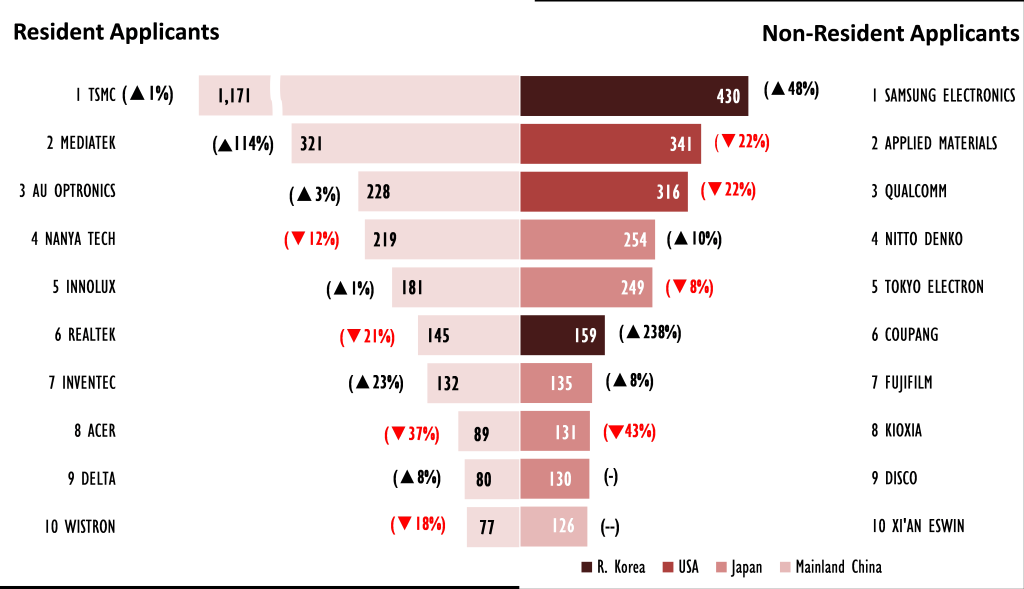 71
71TIPO Releases IPR Statistics for the First Half of 2023
In the first half of 2023, TIPO received a total of 34,611 patent applications (invention, utility model, and design) and 44,653 trademark applications, representing a 0.4% and 4% decrease respectively compared with the same period last year. The number of invention patent applications stood at 24,256 cases. Among resident applicants, TSMC (1,171) outnumbered all the other domestic applicants for the seventh year in a row, and Samsung Electronics (430) leapt to the top of all non-resident applicants for the first time. Uni-President (239) and Saic-Gm-Wuling Automobile (84) topped the list for resident and non-resident trademark applicants respectively. Patent ApplicationsTIPO received a total of 34,611 patent applications. Of these, invention patents (24,256) accounted for a majority of all patent applications, seeing a slight decrease of 0.2%. Both resident (9,390) and non-resident applications (14,866) remained relatively unchanged. Utility model patents declined as well. On the other hand, design patents (3,508) increased by 2% due to a rise in resident applications (9%)(Table 1).Among the top 10 resident applicants for invention patents, TSMC (1,171) has topped the list for seven years straight. Mediatek (321) saw its highest growth rate of 114%, setting a new record in the company’s history by exceeding 300 cases. The number of applications filed by Mediatek, Innolux (181) and Inventec (132) both hit record highs since 2016 (Figure 2).For resident applicants of design patents, Acer (55) surpassed all other applicants once again. L&F Plastics (44) saw its highest growth rate of 76% (Figure 3).The number of invention patent applications from domestic enterprises (7,635) and research institutions (147) grew by 2% and 12%, respectively, while that of domestic colleges and universities (736) decreased. Applications from large enterprises (6,266) as well as from SMEs (1,369) increased by 2% and 3%, respectively.Non-resident applications for invention patents (14,866) were down by 1% (Table 1). Among the top 5 filling countries (regions), Japan led with 6,216 invention patent applications, and applications from both mainland China (1,683) and R. Korea (1,263) grew by about 20% (Figure 1).As for the top 10 non-resident applicants, Samsung Electronics (KR) leapt to the top spot with 430 invention patent applications, setting a new record by exceeding 400 cases. Coupang (KR) (159) saw the highest growth rate of 238% and reached its best ranking since 2016 (6th). Xi'an Eswin (CN) (126) entered the top 10 applicants list for the first time (Figure 2).For non-resident applicants of design patents, Cartier (CH) (72) claimed the top spot for the first time, hitting an all-time record high. Apple (US) (40) accounted for a huge growth of 12.3-fold, due to a lower baseline from the same period last year (Figure 3).Trademark ApplicationsCompared to the same period last year, trademark applications reached 44,653 cases (covering 56,198 classes) and saw a decrease of 4%, a shift from positive growth for 3 consecutive years. The number of applications filed by residents (35,169) and non-residents (9,484) both declined (Table 1).Among top 10 resident applicants, Uni-President claimed the top spot again with 239 applications (Table 3). A breakdown by Nice Classifications (NCL) shows that most applications (7,162) were filed under Class 35, “Advertising, Business Management, Retail and Wholesale Services, etc.” (Figure 4)Among non-resident applicants, mainland China filed the most applications (2,391)(Figure 1). The applications filed by the top 10 non-resident applicants all saw positive growth. Saic-Gm-Wuling Automobile (CN) led with 84 applications (Table 4). A breakdown by Nice Classification (NCL) shows that most applications (1,895) were filed under Class 9, “Computer and Technology Products, etc.” (Figure 5)The top three industries for trademark applications were “Agriculture” (12,198), “Business Services” (9,374) and “Health” (8,936). A majority of resident applications were filed under “Agriculture” (10,246), a rapidly growing portfolio mainly focused on the dining and hospitality industry, whereas non-resident applicants mostly filed under “Research and technology” (3,106) (Figure 6). 72
72TIPO Publishes English Version of Patent Examination Guidelines, Part II, Chapter 1
TIPO has released the English version of the “Patent Examination Guidelines, Part II: Substantive Examination for Invention Patents, Chapter 1. Written Description, Claim, Abstract and Drawing” to enhance the international IP community’s understanding of Taiwan’s patent examination process. Moreover, it functions as a helpful tool for foreign applicants, enabling them to assess whether their patent applications meet the requirements specified in said Guidelines.To learn more about the “Patent Examination Guidelines, Part II: Substantive Examination for Invention Patents, Chapter 1. Written Description, Claim, Abstract and Drawing,” please click the link provided below: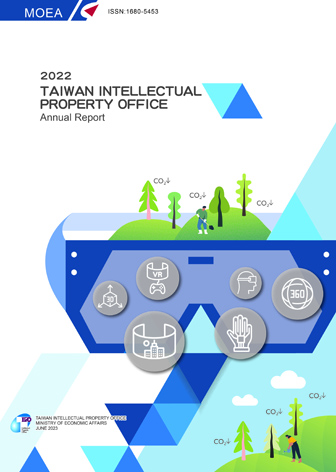 73
73TIPO Annual Report 2022 Showcases Taiwan’s Latest IPR Advancements
TIPO published its Annual Report 2022 in late June 2023, highlighting significant progress in Taiwan’s IPR development over the past year. Despite the challenges posed by local COVID-19 outbreaks, TIPO, alongside our dedicated colleagues, successfully implemented strategic initiatives to overcome the pandemic and meet annual performance goals. The past year saw notable achievements in areas such as patent and trademark examination, IPR legal regime, e-service improvements, promotion of IPR innovation, and international IPR cooperation, contributing greatly to the continuous enhancement of service quality provided by TIPO. For further information, please see:https://www.tipo.gov.tw/en/lp-309-2.html 74
74Amendment to the Regulations Governing the Determination of Patent Term Extention Come into Effect on July 1, 2023
TIPO previously required applicants seeking to extend patent terms on pharmaceutical products or manufacturing methods to submit documentation for the duration of all domestic and/or international clinical trials. Documentation was then sent to the Food and Drug Administration (FDA) of the Ministry of Health and Welfare (MOHW), the central competent authority, to confirm the clinical trial period required for issuing a drug license.On November 2, 2021, the MOHW announced an amendment to the Form for Data Exclusivity and Domestic and International Clinical Trials. The amendment included clinical trial data required for issuing a drug license within the scope of examination. To streamline administrative procedures and improve the efficiency of patent examinations, TIPO announced amendments to the Regulations Governing the Determination of Patent Term Extension on June 28, 2023, which came into effect on July 1 in the same year.According to Article 4 and Article 10 amendments, if the FDA has confirmed the examination data (regarding the period of domestic and/or international clinical trials required for issuing a drug license) submitted by the applicant, then TIPO is no longer required to send the same data in question to the aforementioned authority.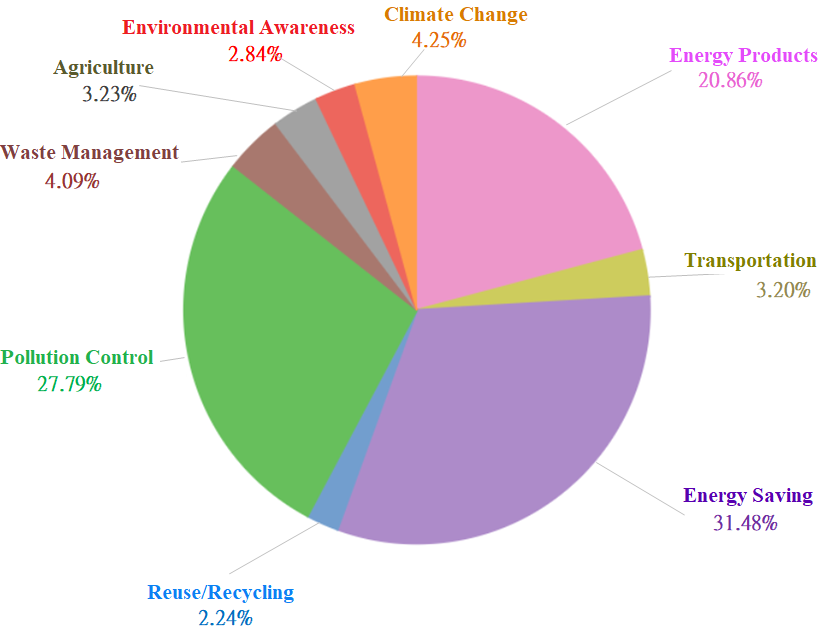 75
75New Green Trademark Analysis Report Reveals Uni-President’s Top-Ranking Performance
To help businesses better understand trends in green trademark registration in Taiwan and promote carbon reduction efforts, TIPO has compiled an analysis report on green trademark industries in Taiwan in the past decade, which examines green trademark application trends across major product classes in Taiwan. Uni-President Enterprises Corp. (“Uni-President”), Apple Inc., and Alibaba Group Holding Limited, a company based in the Cayman Islands, in particular, are some of the top applicants for green trademarks.Trademarks identify the source of goods and services and can serve as indicators of market trends and economic direction. As the world strives to preserve the green planet from rising temperatures, IP trademarks are just as important as technology in the race towards net zero emissions – appealing to many major corporations to take action and reduce carbon emissions.TIPO's report references EUIPO’s research into green trademarks in the EU, filtering trademarks with the Nice Classification listed on applications and further categorizing them into nine major categories of green products: energy products, transportation, energy saving, reuse/recycle, pollution control, waste management, agriculture, environmental awareness, and climate change. This was further subdivided into 35 categories. The report details the proportion of green trademarks in each category, in hopes of helping businesses establish green trademark portfolios, respond to climate change, and formulate net zero carbon emissions strategies.The report also revealed that in the past decade, green trademarks in Taiwan accounted for approximately 15% of the total trademark applications. Overall observations show consistent growth, with the average proportion being around 12.41% from 2013 to 2015, 14.72% from 2016 to 2019, and 15.87% from 2020 to 2022. It is evident that businesses are placing greater emphasis on establishing green trademark portfolios.For green trademark proportions across the nine major categories, the top three (in descending order) were energy saving, pollution control, and energy products – collectively accounting for over 80% of applications. This is clear indication that industry trademark portfolios focus mainly on these three areas.In terms of the nationality of green trademark applicants, Taiwan ranks number one, followed (in order) by Mainland China, Japan, and the US. Mainland China has had impressive performance in transportation, energy saving, pollution control, and waste management. Japan ranks in the top three across all major categories except for energy saving and climate change. The US has had outstanding performance in energy products, energy saving, reuse/recycle, environmental awareness, and climate change.Taking a look at the top three applicants across the nine major categories reveals that Uni-President, Apple Inc., and Alibaba Group Holding Limited from the Cayman Islands are consistent included within the rankings – making them major green trademark applicants in Taiwan. Uni-President and Apple Inc. dominated energy products, energy savings, and waste management, snagging either number one or number two. Uni-President in particular, has made it to the top three in all major categories except transportation and agriculture – a testament to the company’s commendable resolve to grow with Taiwan and strive for net zero emissions.Environmental factors have become increasingly important for businesses and consumers alike. To achieve net zero emissions goals, businesses need to bring new products to market and/or make existing products more sustainable. Green trademarks increase brand visibility and showcases the business’ dedication to sustainable values. TIPO recommends that businesses implement green trademark strategies as soon as possible to take full advantage of the benefits of having green trademarks, as well as market opportunities.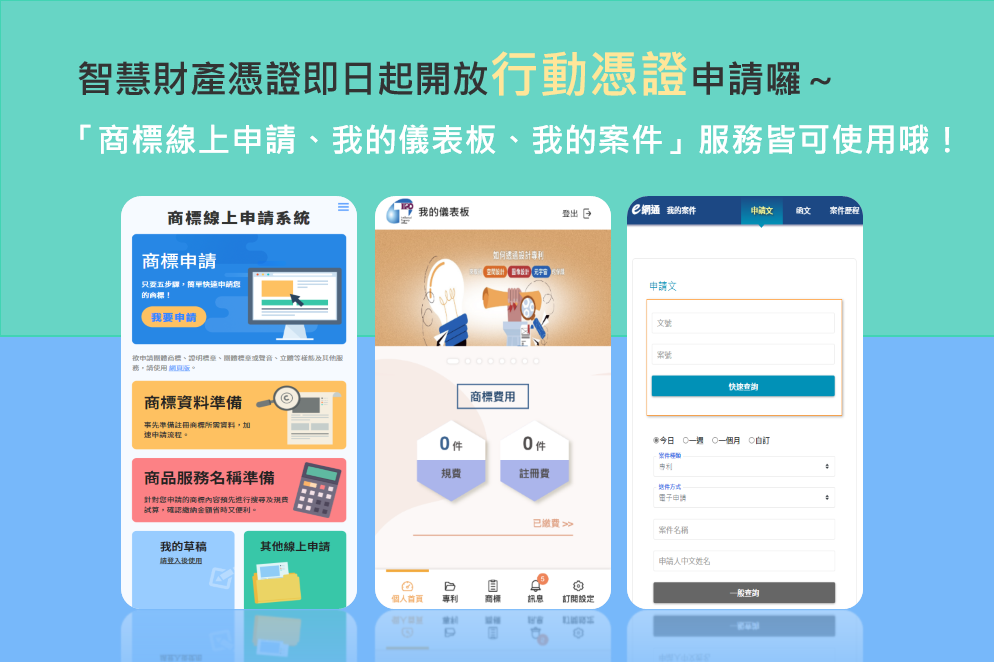 76
76Mobile Applications for TIPO’s TWCA Digital Certificates are Now Available
TIPO commissioned TAIWAN-CA (TWCA) to issue mobile certificates to optimize our digital application services and enhance compatibility with mobile devices. These certificates will support services such as online trademark applications, My Dashboard, My Cases, and other related services that require mobile certificate signing and identity verification.Visit TWCA's certificate application site and fill out the form to apply for mobile digital certificates. You will be required to submit documentation and send the application either directly to TWCA’s Taipei office or to TIPO offices in Hsinchu, Taichung, Tainan, and Kaohsiung. 77
77Taiwan South Korea Design Patent Priority Document Exchange Launch on July 1, 2023
Taiwan and Korea signed an MoU on the Electronic Exchange of Priority Documents (PDX) for Design Patents on November 12, 2021. Following the completion of relevant system development, Taiwan Intellectual Property Office (TIPO) and the Korean Intellectual Property Office (KIPO) launched the PDX program on July 1, 2023.Priority Documents are required in the event that a subsequent patent application is filed with a priority claim. Under the MoU on the Exchange of Industrial Property Information and the Electronic Exchange of Priority Documents signed in 2015, the PDX program has been applicable to invention and utility model patent applications. As the aforementioned program has been put to extensive use by applicants from both countries since its implementation, TIPO and KIPO decided to include design patent priority documents in the program. Upon its implementation, this initiative significantly reduced applicants' time spent on mailing paperwork and streamlined cross-country application procedures, resulting in a more comprehensive and robust priority document exchange mechanism.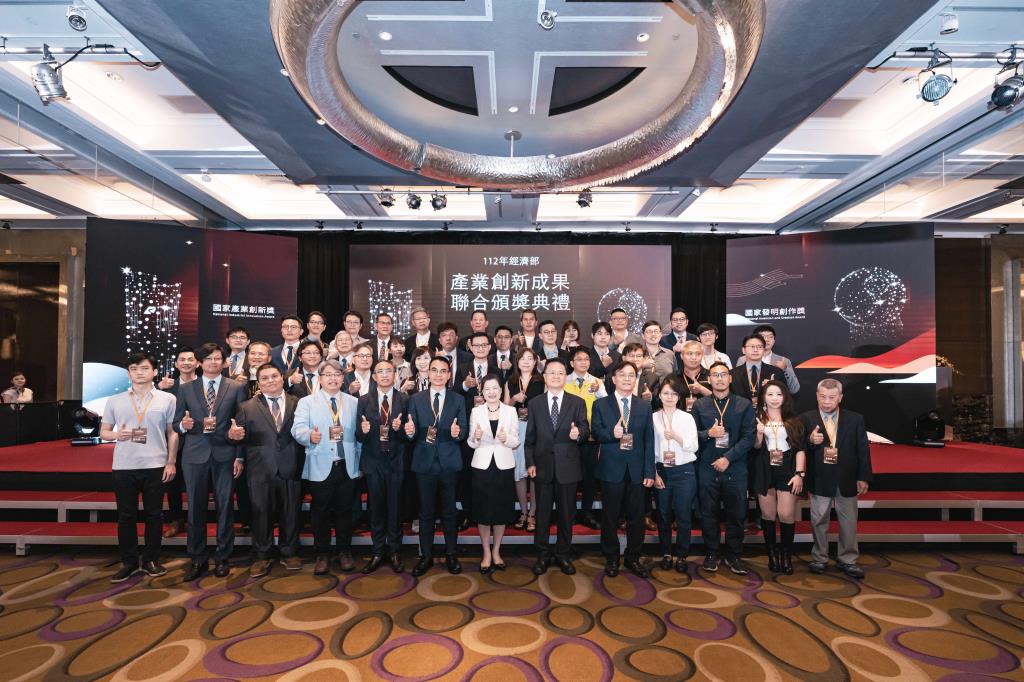 78
78The Highest Honor in the Field of Patents – The Awards Ceremony for the National Invention and Creation Awards
To encourage industry innovation and patent inventions, the MOEA tasked TIPO and the Department of Industrial Technology (DOIT) with organizing the National Invention and Creation Awards and the National Industrial Innovation Awards respectively. The awards give recognition to organizations, teams, and individuals from the industrial, academic, or research spheres that have created added value for technology through incorporating innovation or commercializing invention patents. The hope is that through public recognition, we can encourage domestic businesses, research institutions, and individual inventors to value technological innovation and prompt exchange between the industrial, academic, and research spheres – contributing to the effort of furnishing greater innovation for Taiwan’s industries and technologies.The joint award ceremony for the 2022 National Invention and Creation Awards and the 8th Annual National Industrial Innovation Awards was held on May 15, 2023. Awards were given to 23 organizations, 7 teams, and 16 inventors, as well as 43 patent submissions. The ceremony occurs only once every two years. Vice Premier Cheng Wen-tsan and Economic Minister Wang Mei-hua were in attendance and personally handed out the awards to recipients. A total of almost 300 attendees, including recipients and reporters, came from various industries and bore witness to how innovation prospers within Taiwan industries.Winning entries from the 2022 National Invention and Creation Awards will be featured at the 2023 Taiwan Innotech Expo (TIE) Outstanding Inventions Pavilion between October 12 and 14. All who are interested are welcome to attend the 2023 TIE and view the winning entries for themselves.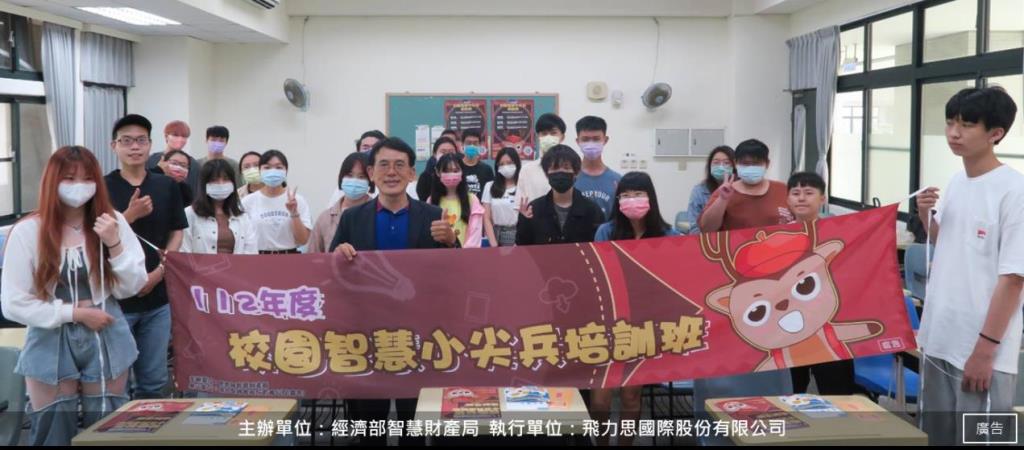 79
79IP Youth Ambassadors Poised for Action - Applications for Advocacy Campaigns Now Open
TIPO is proud to announce the completion of training for 112 IP Youth Ambassadors, who are now prepared to embark on a nationwide mission to promote intellectual property rights. IP advocacy campaign applications are open to elementary, junior high, and senior high/vocational high schools, providing an opportunity to cultivate intellectual property awareness.Recognizing the significance of instilling a profound respect for intellectual property rights from a young age, TIPO organizes annual IP Youth Ambassadors Programs. This program aims to train college students as seed teachers for IPR advocacy. This year, three training sessions were conducted in northern, central, and southern Taiwan. Experts were invited to impart essential knowledge of IPR, delve into emerging copyright issues, and provide guidance on effective advocacy techniques. The program aims to facilitate students' understanding of intellectual property rights and their practical application through relatable real-life examples.TIPO emphasizes that with the rapid development of the Internet and relevant technologies, students have greater access to and utilization of IP. To foster a culture of respect for intellectual property rights among young individuals, TIPO conducts said program for college students, equipping them to serve as advocates for IPR. These trained students are then organized into groups and sent to schools at all levels, including elementary, junior high, and high schools. Through engaging teaching methods such as drama performances and interactive games, the aim is to cultivate the youth's understanding and appreciation of IPR.Schools interested in these IP advocacy campaigns are encouraged to contact the executive unit of the event, FeliZ Communications Group Ltd., at 02-8786-9798, extension 171 (Ms. Lee) or extension 165 (Mr. Chen). Alternatively, they can directly go to the "Copyright x I Support Originals" Facebook fan page for further inquiries.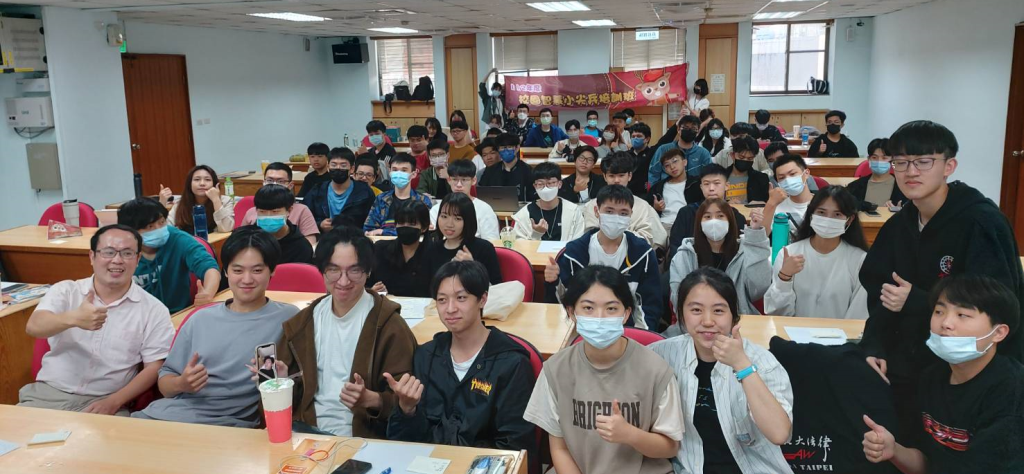 80
80IP Youth Ambassadors Program Came to Successful Close!
In 2023, TIPO held three sessions of the IP Youth Ambassadors Program aimed at undergraduate students. The training mainly consists of IPR professional courses and activities to facilitate skill training, helping college students become seed teachers for IPR. They are heading out in teams to elementary, middle, and tertiary schools and promote IPR knowledge through fun and interactive activities to help these concepts take root.The three sessions this year were held in North, Central, and Southern Taiwan on April 16, 22, and 30 at the New Taipei City Sanchong Worker’s Activity Center, Feng Chia University in Taichung, and the National University of Kaohsiung. We invited Mann C. C. Liu, a copyrights expert and lawyer from InfoShare Tech Law Office, C. T. Mai, Manager at patent and trademark attorney office Tsai, Lee & Chen, and Ming-Shu Tsai from Jia-He Attorney’s Office to speak on IPR concepts. We also invited Supervisor Wei-Ren Su from the Chinese Recreation Guidance Association to share skills on how to lead activities. A team of seed instructors with extensive experience in leading group activities were invited to share relevant experience, allowing students to benefit from their professional knowledge and learn how to respond to various situations. A total of 112 persons completed training for this year’s IP Youth Ambassadors Program. 81
81Translation Requirements for XML Serialization have been Relaxed in Compliance with WIPO ST.26 Standards – With the Changes Effective Immediately
TIPO has implemented the WIPO ST.26 standard since August 1, 2022. In order to enhance the convenience of preparing Chinese translations of XML sequences and expedite the application process, we have relaxed the Chinese translation requirements for XML sequences, effective immediately. Only the invention title, applicant, and inventors need to be translated into Chinese. Other specific limited term contents are no longer required to be translated. For applications notified by TIPO of any missing Chinese translations in the XML sequence, if they meet the criteria of the relaxed requirements, they will also be applicable for the changes.TIPO suggests that patent applications in languages other than Chinese, which include nucleotide or amino acid sequences, should also include a separate XML English sequence listing. This recommendation aims to facilitate the identification of the date on which the necessary documentation is complete and the following examination. The Implementation of WIPO ST.26 Standard Q&A had been revised accordingly.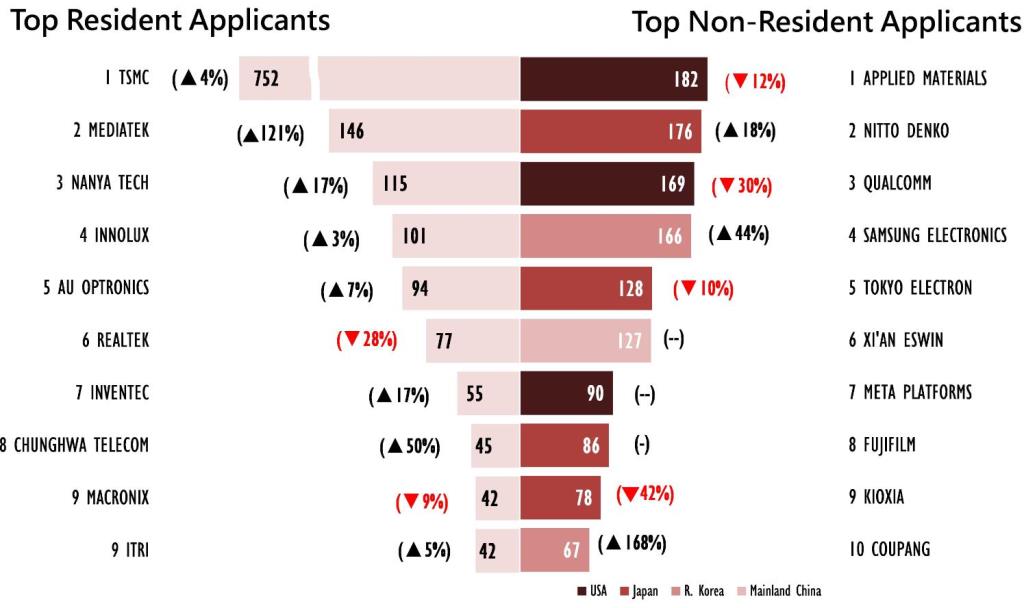 82
82TIPO’s Q1 2023 IPR Statistics Report
In Q1 2023, TIPO received a total of 17,226 patent applications (including invention, utility model, and design patents), marking a 2% decrease over the same period last year. Of these, the number of invention patent applications (12,486 cases) remained steady. Trademark applications stood at 21,494 cases, with a drop of 4%. As for invention patent applicants, TSMC ranked first (752 cases) among resident applicants, while Applied Materials (182 cases) led all non-resident applicants. The top resident and non-resident trademark applicants were Uni-President (102 cases) and Saic-Gm-Wuling Automobile (84 cases), respectively.Patent ApplicationsCompared to the same period (Q1) last year, overall patent applications (17,226 cases) received by TIPO saw a decrease of 2%. Of these, invention patents, most applications filed among overall patents, stood at 12,486 cases, with a slight decrease of 0.4%. Both resident applications (4,637 cases) and non-resident applications (7,849 cases) remained relatively unchanged. The number of utility model patent applications also decreased. On the other hand, design patents (1,654 cases) were up by 1%, thanks to the 6% increase contributed by foreign applicants (Table 1).As for the top 10 resident applicants for invention patent filings, TSMC filed the most invention patent applications (752 cases), setting its all-time-high record and outnumbering other domestic applicants for four straight years. Mediatek (146 cases) saw the highest growth rate with 121%; Innolux filed 101 applications, setting its new historical record by exceeding 100 cases (Figure 2).In terms of resident applicants for design patent filings, Acer claimed the top spot again with 24 cases. Both Ant Creative (16 cases) and Hotek (12 cases) filed for the first time and entered the top 5 list at the same time (Figure 3).The number of invention patent applications from domestic enterprises (3,817 cases) and research institutions (83 cases) grew by 2% and 9%, respectively. On the other hand, the number of applications from colleges and universities (341 cases) decreased. Among the enterprises, the applications filed by large enterprises (3,162 cases) experienced a shift from negative to positive growth, whereas that of SMEs (655 cases) fell.The number of invention patent applications filed by foreign applicants (7,849 cases) remained steady. Of these, Japan filed the most with 3,504 cases (Figure 1). As for the top 10 applicants, Applied Materials (US) reclaimed the top spot by 182 cases. Xi'an Eswin (CN)(127 cases) and Meta Platforms (US)(90 cases) stood at the sixth and seventh spot, respectively, their best ranking ever achieved. Coupang (KR)(67 cases) saw the highest growth rate, with 168% (Figure 2).As for non-resident applicants for design patent filings, Ford Global Tech (US) came out on top with 49 applications. Apple (US)(36 cases) grew by 35 times, given a lower base period last year. Phoenix (AU)(24 cases) entered the top 5 list for the first time, and Sony Interactive (JP)(16 cases) hit its record high (Figure 3).Trademark ApplicationsCompared to the same period last year, trademark applications reached 21,494 cases (covering 27,096 classes) and saw a decrease of 4%, affected by the higher base period last year. The number of applications filed by residents (16,750 cases) and non-residents (4,744 cases) both declined (Table 1).As for the top 10 resident applicants, Uni-President filed 102 applications, outnumbering all other applicants again. The majority of the top 10 resident applicants saw an increase in the number of applications filed (Table 2). A breakdown by Nice class shows that most applications (3,429 cases) were filed under Class 35, “Advertising, Business Management, Retail and Wholesale Services, etc.” (Figure 4)Among non-resident applicants, mainland China filed the most applications (1,099 cases)(Figure 1). The applications filed by the top 10 non-resident applicants all saw positive growth. Saic-Gm-Wuling Automobile (CN) topped the list with 84 applications, outnumbering all other applicants (Table 3). A breakdown by Nice class shows non-resident applicants filed the most applications (921 cases) in Class 9, “Computer and Technology Products, etc.” (Figure 5)The top 3 industry categories trademark applicants filed under were “Agriculture” (5,843 cases), “Health” (4,488 cases), and ”Business Services” (4,484 cases). Most applications filed by residents were under “Agriculture” (4,901 cases), the majority of which were for the restaurant and accommodation industries. On the other hand, most non-resident applications were filed under “Research and technology” (1,478 cases)(Figure 6).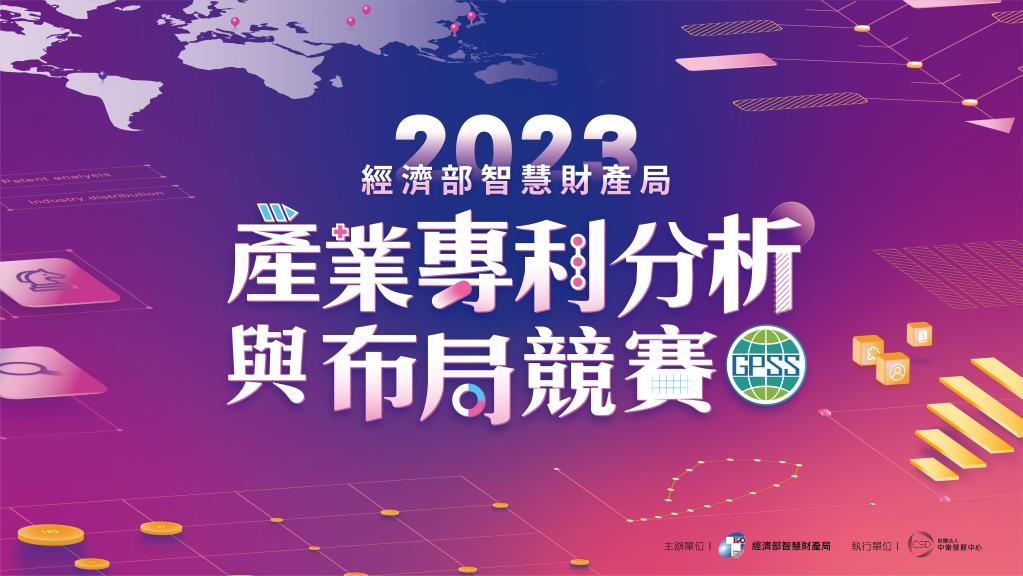 83
83The 2023 Competition for Patent Portfolio Analysis Addresses Needs of the Industry
TIPO is hosting the third annual Competition for Patent Portfolio Analysis. To strengthen strategic patent portfolios for corporations, this year’s theme featured specific technologies designated by the industry. This is designed to help companies head hunt and explore their needs in order to foster and cultivate patent portfolio professionals for the industry and academia – creating a mutually beneficial arrangement. TIPO hopes that the competition will facilitate patent search and patent portfolio analysis to pave a future for domestic industry development. Registration is available from now until June 30. All those who are interested in strategic IP patent portfolios are welcome to sign up.The competition is conducted on the GPSS (Global Patent Search System) platform, where competitors can search for patents, analyze statistics and charts, and even build advanced technology functionality matrices directly on the platform to identify technology evolution and development trends and other important information. This helps companies build patent portfolios and develop competitive strategies.To encourage participation, TIPO is providing a monetary prize of NT$ 250,000 for the winning team, and will also offer nine hours of free educational training to competitors. Training will start with patent searches and dive into patent portfolio analysis to familiarize competitors with GPSS, with the aim of enhancing their knowledge and skills for patent search and analysis.TIPO is also offering two online warm-up seminars on May 11 (Thu) and 18 (Thu) before the competition, inviting patent experts with extensive practical experience to share on topics related to patent search analysis and industry patent portfolios. The aim is to share resources relevant to the competition with competitors for better preparation. We welcome all who are interested in patent portfolio analysis to join.Registration for the competition is available online. TIPO welcomes all interested persons to form teams of 3-5 persons and sign up for the competition. For more details about the competition, please refer to the competition website (in Mandarin): https://gpss.tipo.gov.tw/gpsskm/competition2023Come join us!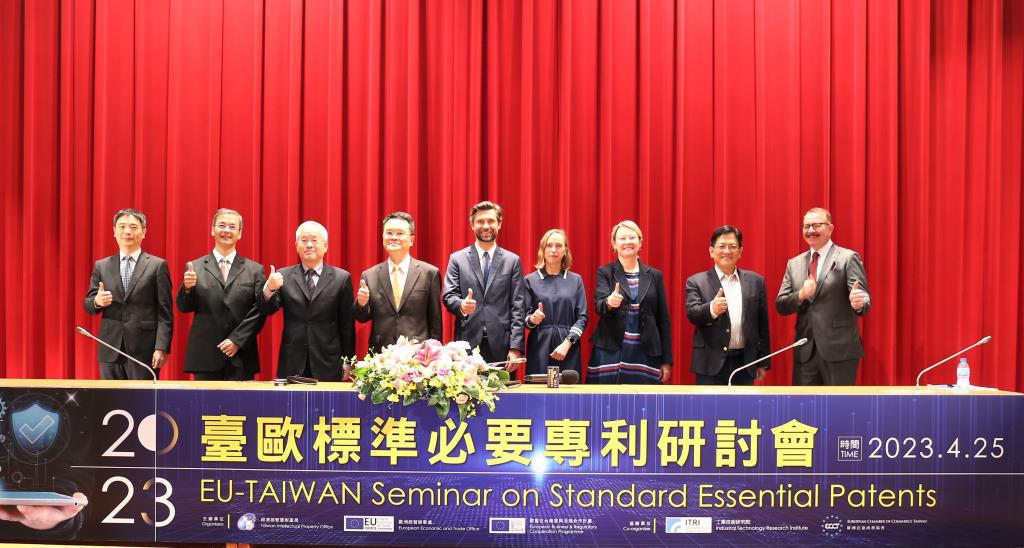 84
84The 2023 EU-Taiwan Seminar on Standard Essential Patents a Success Thanks to Everyone’s Participation and Support!
The Taiwan Intellectual Property Office (TIPO) has partnered with the European Economic Trade Office (EETO) and the European Business & Regulatory Cooperation (EBRC) to host the 2023 EU-Taiwan Seminar on Standard Essential Patents on April 25th, 2023, at the International Conference Hall, Tsai Lecture Hall, College of Law, NTU.The Seminar featured prominent speakers, including Anneli Andresson, Policy Officer at DG TRADE of the European Commission; John Eastwood, Co-chair at ECCT Intellectual Property Rights Committee; Hu Zu-shun, Director of the Department of Planning at the Fair Trade Commission; and Lai En-shang, a Patent Examiner at TIPO. They shared their insights on various topics such as the Development of Standard Essential Patents of EU, Standard Essential Patents and Anti-Suit Injunctions, Standard Essential Patents & Its Relationship with Competition Law, and Standard Essential Patents and Information Transparency: Assessing the Essentiality of Judgement Standards of SEPs. This seminar brought together 168 participants from the private sector, government agencies, and academia to exchange perspectives with experts from Taiwan and Europe, providing a valuable platform for active discussions and knowledge-sharing.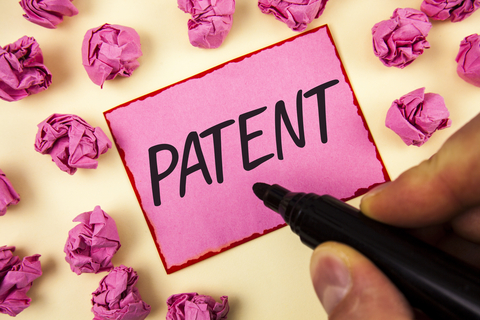 85
85Revisions to the Enforcement Rules of the Patent Act Shall be Enacted on May 1, 2023
Draft revisions to the Enforcement Rules of the Patent Act to meet patent examination needs and increase examination efficiency were promulgated on March 24, 2023. The revisions will take effect on May 1, 2023. A summary of key points are as follows:1. To determine whether any amendments are made in divisional applications, TIPO shall carefully review whether their subject-matter has extended beyond the content of the earlier application as filed. Applicants are required to attach a marked document indicating differences/changes in the application, with added parts underlined and deleted ones struck through, along with a relevant explanation of any and all alterations made, thus improving efficiency in the examination of divisional applications.2. In accordance with Article 27 of the Patent Act, if a biological material has been deposited in a depository designated by a foreign country in its territory with which Taiwan recognizes the effects of deposits based on reciprocity, and the certificate(s) of deposit issued by said foreign depository is submitted within the time period prescribed, the applicant is exempted from the requirement of making a deposit in Taiwan. Presently, foreign depository institutions that have been reciprocally recognized by Taiwan are international depositary authorities under Article 7 of the Budapest Treaty. These authorities shall issue documents that include certificates of deposit and viability statements, a practice that Taiwan also adopts. In order to promote mutual recognition of biological material deposits between Taiwan and other countries, documents issued by depositories not acquiring the status of international depository authority must include a viability statement.86
New Director General Cheng-Wei Liao and Deputy Director General Shu-Mei Li Take Office on March 27, 2023
Director General Cheng-Wei Liao obtained his Ph.D. in Biomedical Engineering from Chung Yuan Christian University. He has held various positions at TIPO since 2000, including patent examiner, Director of Patent Division I, and Deputy Director General. During his tenure, he successfully executed a patent backlog clearance plan, supervised the establishment of the Patent Search Center, promoted online patent examination, and proposed an inter partes review system for patent and trademark cases. He has also actively expanded cooperation with patent offices in various countries.Director General Liao possesses an extensive and diverse educational and professional background, a global perspective, and exceptional leadership skills.Deputy Director General Su-Mei Lee earned her Master's in International Studies from the University of Wyoming in the United States. She joined the Central Bureau of Standards (the predecessor of TIPO) in 1991 and has since held various positions, such as Trademark Examiner, Director of Trademark Division, and Chief Secretary of TIPO. With professional qualifications and extensive practical experience in intellectual property, Deputy Director Li has been recognized as a model civil servant by the Ministry of Economic Affairs for outstanding performance.The Taiwan Intellectual Property Office oversees critical aspects of intellectual property, including patents, trademarks, copyrights, trade secrets, and integrated circuit layout designs. To stay abreast of global industrial competition and align with industrial development, the office is committed to proactively building partnerships with inventors, academia, research institutions, and enterprises. It aims to enhance the protection and licensing mechanisms for creative works, promote substantive exchanges and collaboration with IP agencies worldwide, and establish a robust intellectual property protection environment in Taiwan.87
TIPO Statistics Report: Patent and Trademark Applications in 2022
In 2022, overall patent applications slightly decreased by 0.8% to 72,059 cases. Of these, invention patent applications (50,242 cases) grew by 2%, while utility model (14,662 cases) and design patent applications (7,155 cases) decreased by 7%, respectively. For trademark applications, 94,778 cases were filed, covering a total of 122,320 classes. As to examination efficiency, the average first action pendency was 8.8 months for invention patent applications and 5.2 months for trademark applications.Resident invention application number remained stableIn 2022, invention patent applications (19,400 cases) slightly decreased by 0.8%, mainly due to the declines in filings from individual and research institute sectors. Meanwhile, applications by corporations and educational institutes saw a growth of 1% and 7%, respectively. However, there was a moderate decrease in utility model (13,669 cases) and design applications (3,411 cases) by 6% and 3%, respectively, mainly due to the declines in filings from individuals and corporation sectors (Table 1), compared to the previous year.Japan claimed top spot in non-resident patent applicationsNon-resident applications for invention patents (30,842 cases) grew by 4%, while utility model (993 cases) and design (3,744 cases) patents saw declines (Table 1, Figure 3).A breakdown by applicant nationality shows that Japan continued to top the list with 13,128 overall applications (-1% compared to the previous year), followed by the US (8,517 cases, +7%) and mainland China (4,424 cases, +4%), while South Korea (2,775 cases) saw the highest growth at 16% among the top 5 countries. Japan also led in the number of invention and design patent applications, and mainland China surpassed other countries in utility model applications (Figure 4).Overall trademark application numbers remained fairly constant; growth seen in resident applicationsThe number of trademark applications totaled 94,778 cases (covering 122,320 classes) and marked the second highest number in the past two decades, preceded only by the records set in 2021 (95,917 cases, covering 123,217 classes). Notably, there was a 1% increase in resident (74,326 cases) and a 9% decrease in non-resident applications (20,452 cases) (Table 1, Figure 5, Figure 7).Among the top 5 trademark-filing countries or regions, mainland China (4,324 cases) took the lead, followed by the US (3,572 cases), Japan (3,546 cases), R. Korea (1,573 cases), and Hong Kong (1,120 cases). Applications numbers filed by mainland China and the US showed double-digit drops, while those from Japan were up 3% compared to last year (Figure 8).UNI-PRESIDENT ranked No. 1 resident trademark applicant in Taiwan for 3rd straight year, while IPPLUS TECHNOLOGY lead in non-residentsAmong resident applicants, UNI-PRESIDENT ranked first, with applications covering 834 classes, followed by WOWPRIME (189 classes) and KING CAR FOOD (163 classes). With regard to non-resident applicants, IPPLUS TECHNOLOGY claimed the top with applications covering 150 classes, followed by TENCENT HOLDINGS and JOHNSON & JOHNSON (both covering 94 classes) (Figure 9, Figure 10).With regard to resident trademark applications, Class 35 (advertisements and business operation) topped the list with 15,220 classes, followed by Class 30 (coffee, tea, pastries; 7,308 classes) and Class 43 (restaurants and lodgings; 7,206 classes). Furthermore, the COVID-19 pandemic has boosted online shopping, remote technology and video games, leading to a 7.5% increase in Class 41 (education; entertainment) and a 2.0% increase in Class 9 (computer and technology) (Figure 11). Regarding non-resident trademark applications, Class 9 led with 4,493 classes (Figure 12). With the exception of Class 42 (scientific and technological services), all application numbers for the top 5 classes decreased by 2% to 21%.Invention patent and trademark application pendency remained stableTIPO went full throttle to optimize examination quality and efficiency. As a result, the average disposal pendency was 14.3 months for invention patent applications and 6.5 months for trademark applications.88
Top 100 Patent Applicants in 2022
TIPO’s 2022 Statistical Rankings for Patent Applications and Grants reveals that TSMC maintained its position as the top domestic patent applicant for the seventh consecutive year, filing 1,534 applications. As for foreign applicants, Applied Materials secured the top spot for the first time, with a total of 881 applications. With respect to the numbers of patents granted for all three patent types, TSMC led the pack for domestic applications (1,196 patents granted), and Qualcomm was the most prolific foreign applicant (573 patents granted). TSMC ranked top among domestic applicants for 7th straight yearCompanies active in the semiconductor, display, and ICT industry sectors headed the list of top 10 domestic applicants. With 1,534 cases, TSMC has consistently filed the most applications since 2016. Acer (530 cases) and AU Optronics (505 cases) came in second and third, respectively. Mediatek’s application filing surged by 58% (412 cases), while Nanya Tech (371 cases) and Innolux (336 cases) each filed their highest number of applications over the last 10 years (Table 1).The top 100 domestic patent applicants filed 12,771 cases in 2022, a year-on-year increase of 4%. The number of invention (9,555 cases) and design patent applications (793 cases) were up 4% and 14%, respectively. The growth in applications was mainly driven by corporations and educational institutions. Furthermore, the filings in utility model patent applications (2,423 cases) also grew by 3% (Figure 1, Figure 2).Taiwan Cooperative Bank took lead; MEGA International Commercial Bank applied for the most invention patentsThere were six banks among the top 100 domestic patent applicants in 2022. Taiwan Cooperative Bank (220 cases) headed the list of patent applications, followed by the Bank of Taiwan (214 cases) and MEGA International Commercial Bank (205 cases), which also claimed the top position for bank invention patent applications (53 cases). Taishin International Bank (87 cases), meanwhile, made its debut on the list for the first time (Table 3).Among school applicants, Taipei City University of Science and Technology lead in overall patent applications, while National Cheng Kung University was most active in filing invention patentsTwenty-eight schools were among the top 100 domestic applicants for overall patents. Taipei City University of Science and Technology ranked first with 162 applications for the third straight year. Meanwhile, National Cheng Kung University (135 cases) claimed first place in school rankings for invention patent applications, followed by National Yang Ming Chiao Tung University (125 cases), National Tsing Hua University (108 cases), and National Taiwan University (77 cases) (Table 4).Industrial Technology Research Institute remained in top position for invention patent applications filed by research institutionsTwo research centers were also among the top 100 domestic applicants for patents across various types. The Industrial Technology Research Institute placed eighth in the overall rankings with 331 applications, while the Metal Industries Research ranked 41th with 87 filings (Table 5).Applied Materials headed foreign patent applicants for the first timeOn the foreign applicant front, the top 10 companies were mainly active in the semiconductor, ICT, and chemistry industry sectors. Applied Materials became the largest patent applicant with record-high 881 applications, while smartphone IC designer Qualcomm fell one notch to second place with 763 patent applications. Samsung Electronics took the third spot with 675 applications, the most it has filed in the last 10 years. Moreover, Meta Platforms Technologies (293 cases) and Shin-Etsu Chemical (275 cases) made their first appearance on the list for the first time (Table 2).The top 100 foreign patent applicants collectively filed 14,556 cases (+3%) in 2022, mainly driven by the rise in invention (13,069 cases) and utility model patent applications (181 cases), with growth rates of 6% and 22%, respectively (Figure 3).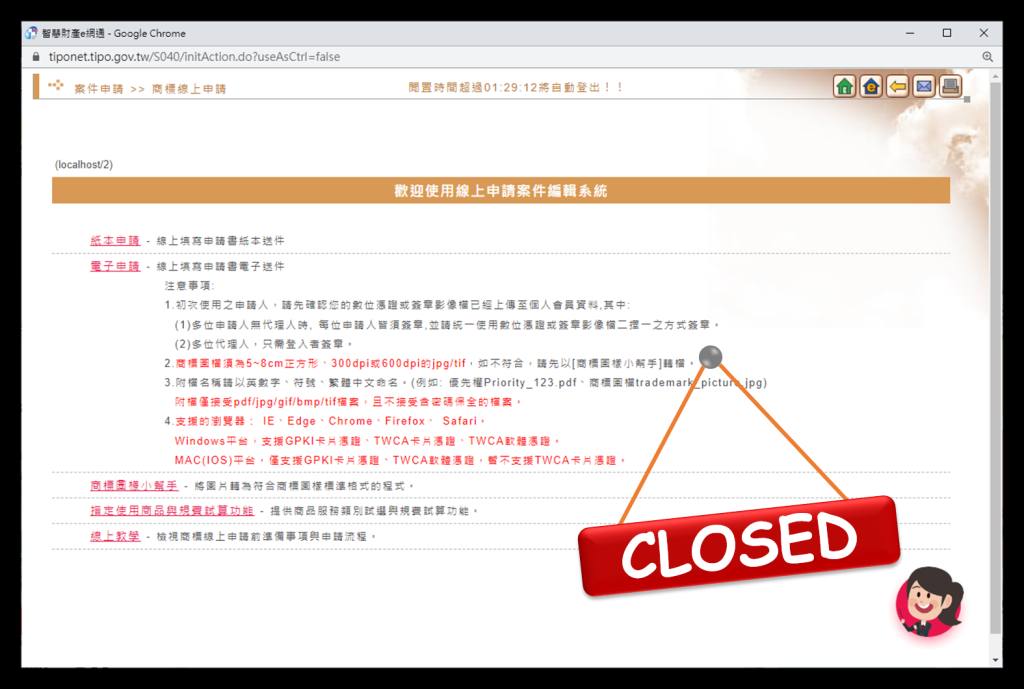 89
89TIPO’s New Trademark Online Application System Launched
TIPO launched the New Trademark Online Application System in 2022 to enhance the convenience of online trademark applications. The system offers a range of frequently-used application forms, such as those for graphic, color, sound, and three-dimensional trademarks, as well as certification marks. In addition, said system provides forms for various services, includingamendments, withdrawals, divisions, pre-registration changes, registration renewals, etc.As of December 2022, the new version of the system has achieved a utilization rate of 98.4%. The previous trademark online application system, launched in 2008, will remain closed indefinitely. For system-related assistance or suggestions, please email [email protected] 90
90Analysis of Trends in Trademark Applications Filed in 2017-2021
On November 21, 2022, WIPO released the latest edition of the World Intellectual Property Indicators 2022 (WIPI 2022), which provides information on various aspects of trademark worldwide for the year 2021, including the total number of applications and registrations, first OA and disposal pendency, final decision data, and application class counts per GDP and capita. TIPO analyzed trademark application trends for both foreign enterprises and industrial development of local counties and cities by referring to WIPI 2021 data and Taiwan’s trademark registration statistics from the past five years. The analysis evaluated the potential industrial development of Taiwan's industries by examining the classes of goods or services designated in trademark applications and compared them with global application trends. This analysis culminated in the report Analysis of Trends in Trademark Applications Filed in 2017-2021.The report indicates that the number of trademark applications worldwide in 2021 was nearly 14 million, covering over 18.1 million classes, with significant growth of 5.5%. Due to effective prevention measures and public cooperation with government policies, without any large-scale lockdown or stringent public quarantine measures, Taiwan's economy remained relatively unaffected by the impact of the pandemic and is currently in recovery. The report also shows a slight increase of 1.15% in the number of foreign trademark applications filed in Taiwan compared to the previous year.The Analysis of Trends in Trademark Applications Filed in 2017-2021 can serve as a valuable reference for the development of industry IP portfolios, brand building, and market trend forecasting.91
TIPO’s Q4 2022 IPR Statistics Report
In Q4 2022, TIPO received a total of 19,130 patent applications (including invention, utility model, and design patents), which remained steady compared to the same period last year. Among them, 13,370 invention patent applications were filed, marking a 3% increase. Trademark applications, on the other hand, stood at 22,890 cases with a drop of 8%. As for invention patent applicants, ITRI ranked first (213 cases) among resident applicants, outnumbering the others for the second year in a row; Samsung Electronics (212 cases) led all non-resident applicants. The top resident and non-resident trademark applicants were Cathay Life Insurance (128 cases) and FindSatoshi Lab (37 cases), respectively. Patent ApplicationsCompared to the same period (Q4) last year, overall patent applications (19,130 cases) received by TIPO saw a slight decrease of 0.4%. Of these, the majority were invention patents, with 13,370 cases and a 3% increase. Both resident applications (5,265 cases) and non-resident applications (8,105 cases) increased, with the former showing a higher growth rate (6%) compared to that of the latter (1%) (Table 1).As for resident applications, ITRI filed the most invention patent applications (213 cases), surpassing other applicants. Inventec (76 cases) registered a considerable growth rate of 171%. The number of applications filed by Mediatek (147 cases) and Nan Ya Plastics (64 cases) hit their decade highs (Figure 2).In terms of design patent applications, Acer filed the most applications with 40 cases. Getac (30 cases) and AUO Display (13 cases) entered the top 5 list for the first time (Figure 3).The number of invention patent applications from domestic enterprises (3,896 cases) and colleges and universities (541 cases) both grew by 10%.The number of invention patent applications filed by foreign applicants (8,105 cases) saw a small increase of 1% (Table 1). Japan filed the most with 2,942 cases (Figure 1). Among the top 10 applicants, Samsung Electronics leaped to the top of invention patent applications for the first time by filing 212 applications. The number of invention patent applications filed by Samsung Electronics, LG Display (82 cases), and Lam Research (71 cases) are at their all-time highs (Figure 2).As for design patents, Ford Global Tech came out on top with 44 applications. PSA (22 cases) saw a growth rate of 120%, and Japan Aviation hit a new record high with 24 applications, entering the top 5 list for the first time (Figure 3).Trademark ApplicationsCompared to the same period last year, trademark applications reached 22,890 cases (covering 29,252 classes) and saw a decrease of 8%, given a higher base period last year. The number of applications filed by residents (18,088 cases) and non-residents (4,802 cases) both decreased (Table 1).As for trademark applicants, Cathay Life Insurance filed 128 applications, outnumbering all other resident applicants (Table 2). Most of the number of applications filed by the top 10 applicants increased. In terms of the classes resident applicants filed under, most applications (3,734 cases) were filed under Class 35, “Advertising, Business Management, Retail and Wholesale Services, etc.” (Figure 4)Among non-resident applicants, mainland China filed the most applications (909 cases) (Figure 1). FindSatoshi Lab Limited, a company incorporated in the British Virgin Islands, ranked first among non-resident applicants with 37 applications, surpassing all others (Table 3). The number of applications filed by the top 10 applicants all saw positive growth. Regarding trademark classes, non-resident applicants filed the most applications (1,065 cases) in Class 9, “Computer and Technology Products, etc.” (Figure 5)The top 3 industry categories trademark applicants filed under were “Agriculture” (6,116 cases), “Business Services” (4,982 cases), and “Health” (4,595 cases). Most applications filed by residents were under “Agriculture” (5,243 cases), the majority of which were for the hospitality industries. On the other hand, most non-resident applications were filed under “Research and technology” (1,738 cases) (Figure 6).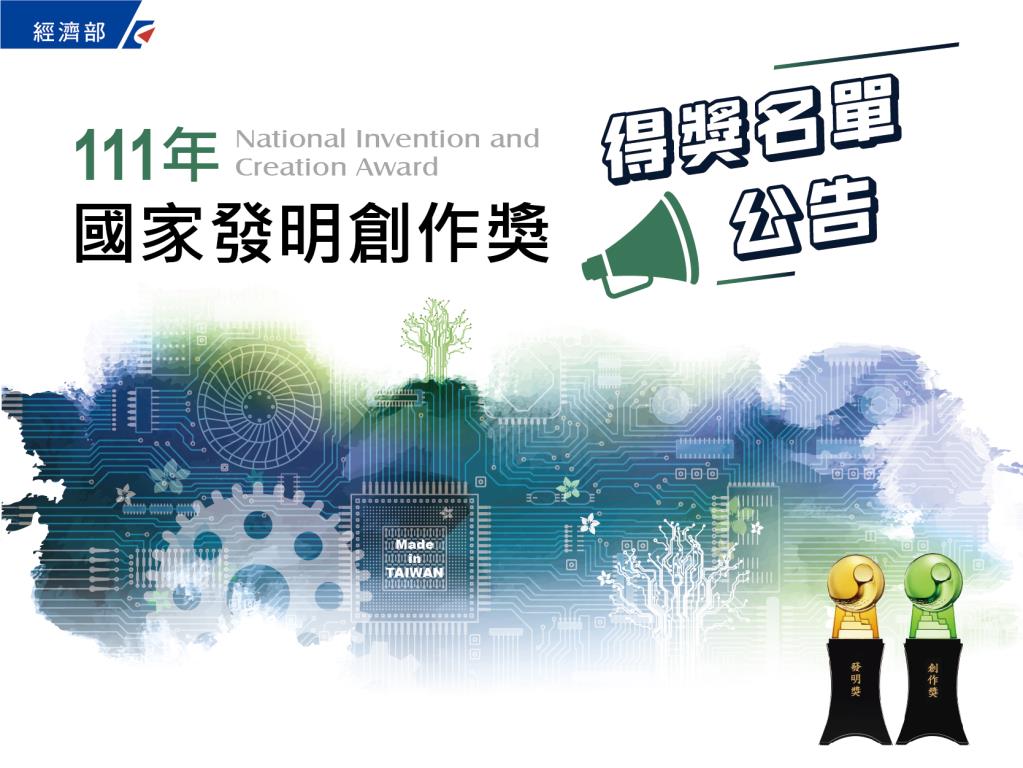 92
922022 National Invention and Creation Award Winners Announced
The National Invention and Creation Award recognizes creative endeavors and acknowledges the inventive contributions of its awardees. This year's winners, 43 outstanding entries in total, have just been announced and will share the total grant of $8.7 million NTD. Among the winners were 6 gold and 20 silver medals in the invention category, as well as 6 gold and 11 silver medals in the creation category. One of the gold medalists of the Invention Award presented the patent "Sport posture analysis system and method thereof," which uses built-in sensors in rackets to detect players' swinging motion, generating accurate, objective and efficient training data. This invention has been recognized by the International Table Tennis Federation and was utilized in the para-athletics classification system during the Tokyo 2020 Summer Paralympics.The Taiwanese government established the National Invention and Creation Award to encourage innovative research and development and honor exceptional invention, utility model, or design patents. The competition attracted a total of 459 eligible entries vying for the highest accolade, including 382 entries for the invention award and 77 for the creative award, showcasing active participation from industry, academia, and research institutions. Entries showcased unique innovations and applications in various technical fields and were evaluated fairly by being divided into groups based on their respective technical fields. Winners were selected through rigorous preliminary and secondary evaluations conducted by experts and scholars and will be awarded certificates, trophies, and prizes.TIPO highlights that many of the awarded patents have been successfully commercialized and patented in multiple countries, which indicates significant market potential. The winning patents span various industries, including "Liquid Crystal and Photonics," "Information and Communication," "Biotechnology and Medicine," "Medical and Industrial Materials," "Intelligent Machinery," and "Circular Economy." By recognizing the award winners, TIPO hopes to facilitate commercialization and industrialization of innovative R&D achievements, which play significant roles in Taiwan’s economic growth.The winners will receive their awards at the 2023 National Industrial Innovation Joint Award Ceremony in April this year. Their winning entries will be showcased at the 2023 Taiwan Innotech Expo from October 12-14, garner interest from both local and international investors, and generate business prospects for inventions and innovative works in Taiwan. 93
93Metaverse-Related Technology Analysis Report Published for Public Reference
The emergence of Metaverse is expected to drive significant advancements in extended reality (XR), digital service platforms, and internet technologies. To assist in understanding core technologies of the Metaverse, TIPO has analyzed 107,000 patents related to the Metaverse that were filed before 2021. Based on their structures and themes, 32 crucial patents have been selected and further analyzed to provide the latest insights on the core technology and patent trends in the Metaverse. This report also features suggestions regarding Metaverse patent application and examination for reference to the public.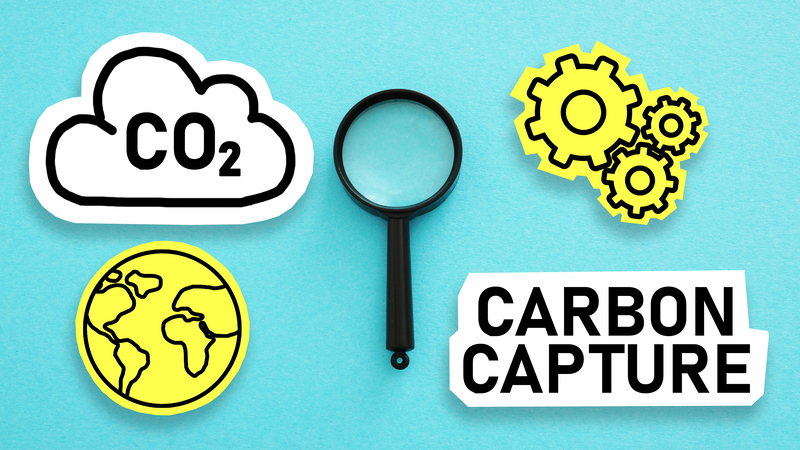 94
94TIPO Releases International Patent Trend Analysis Report on Carbon Capture Technology
Aimed at intensifying efforts to fight climate change, the Glasgow Climate Accord calls for a reduction in the use of coal and establishes the basic rules of the global carbon market. In line with this, the National Development Council of Taiwan published Taiwan’s Pathway to Net-Zero Emissions in 2050 in March last year, which identified "carbon capture, utilization, and storage" as one of its 12 key strategies.In response, TIPO is focusing on Carbon Capture, Utilization, and Storage (CCUS) and has compiled relevant patent information (published before the end of December 2021) from various countries. Said information will be subject to further analysis to provide a comprehensive view of overall patent trends, global patent filing trends for related technologies, and filing trends at major patent offices. Furthermore, TIPO will conduct a thorough analysis of the most frequently cited and industry-relevant patent cases related to carbon capture technologies in high-emission industries (e.g., petrochemicals, steel industry, etc.). Based on this analysis, TIPO will release the International Patent Trend Analysis on Carbon Capture Technology for public reference.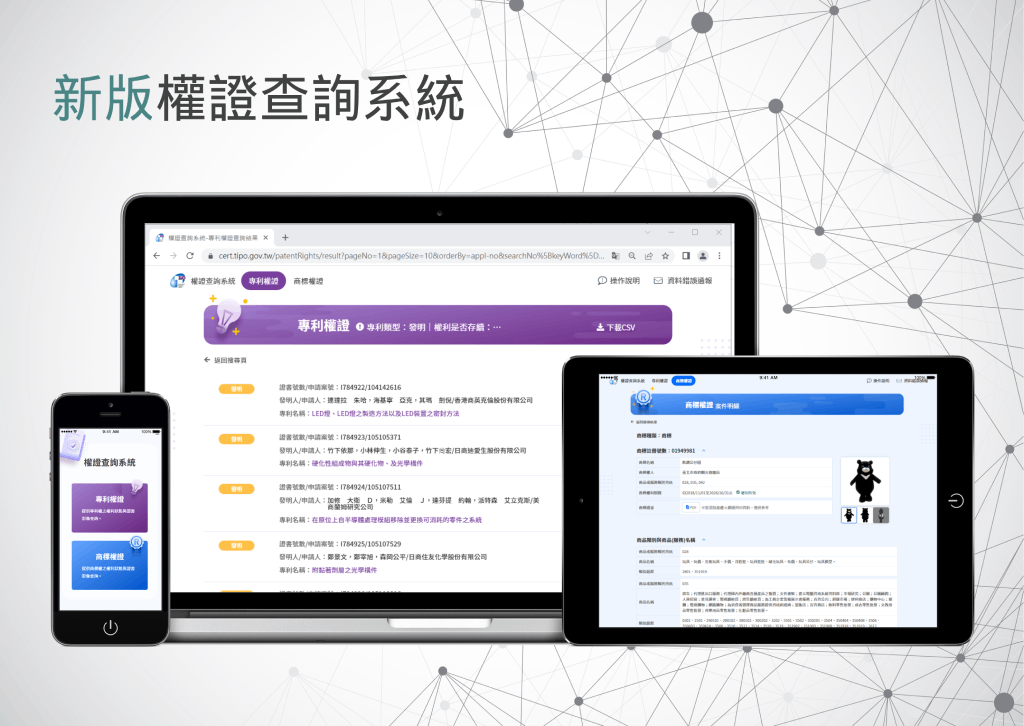 95
95TIPO Launches New Inquiry System for Patent and Trademark Certificates and Rights
TIPO has made available the "Inquiry System for Patent and Trademark Certificates and Rights" service since 2017, allowing users to search the latest rights status using an array of search criteria, such as certificate number, application number, rights holders/agents, publication date, and patent title or trademark name. Additionally, users can scan QR codes on patent and trademark certificates for immediate access to information.The Office has redesigned the website of the service with a focus on a user-friendly interface to improve efficiency and service quality. The new website features include the following:1. Optimized operation for enhanced convenience and mobile device compatibility.2. Unlimited search results per search, eliminating the previous display limit of 500 results.3. Customizable display of search result pages and number of results per page for ease of browsing.TIPO is pleased to announce the pre-launch of its redesigned website, developed to offer a more streamlined and user-friendly experience. The website is now open for a trial run - all interested parties are welcome to test out its features!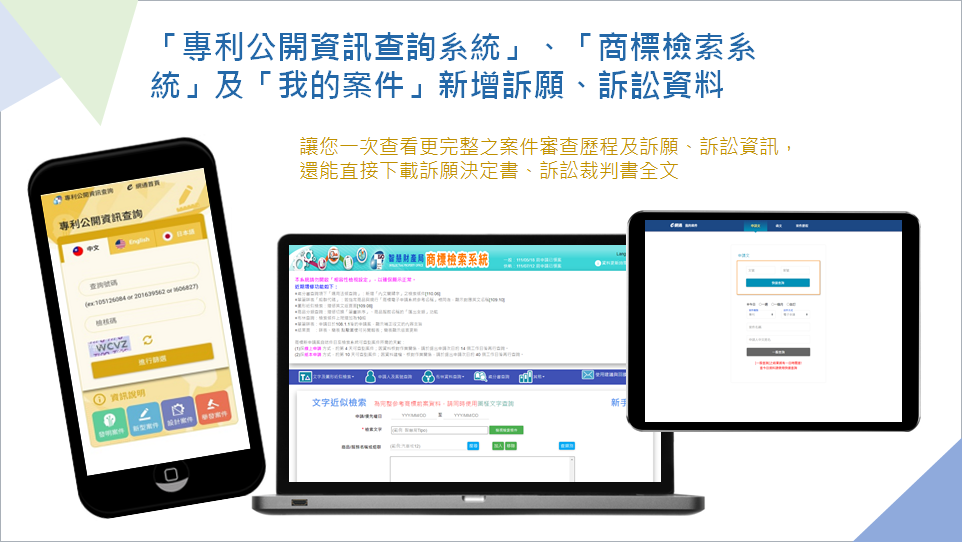 96
96TIPO Enhances Online Systems with Addition of New Administrative Appeal and Litigation Case Information
TIPO has collaborated with the Petitions and Appeals Committee of the Ministry of Economic Affairs and the Judicial Yuan to increase the accessibility of intellectual property information in Taiwan. As a result of this partnership, TIPO has integrated patent and trademark case information (including this year and the last five years) and litigation information (dating back to 2021) into systems such as "Patent Public Information Inquiry System", "Trademark Search," and the "My Filings" section on the e-Filing platform, allowing users to access complete case information. These services were officially made available to the public on December 19, 2022.Users can now browse administrative appeals and litigation information and download the full text of appeal decisions and litigation judgments directly. Additionally, the “Patent Public Information Inquiry System” has been optimized to provide a more convenient and intuitive inquiry feature. All parties are welcome to utilize these services.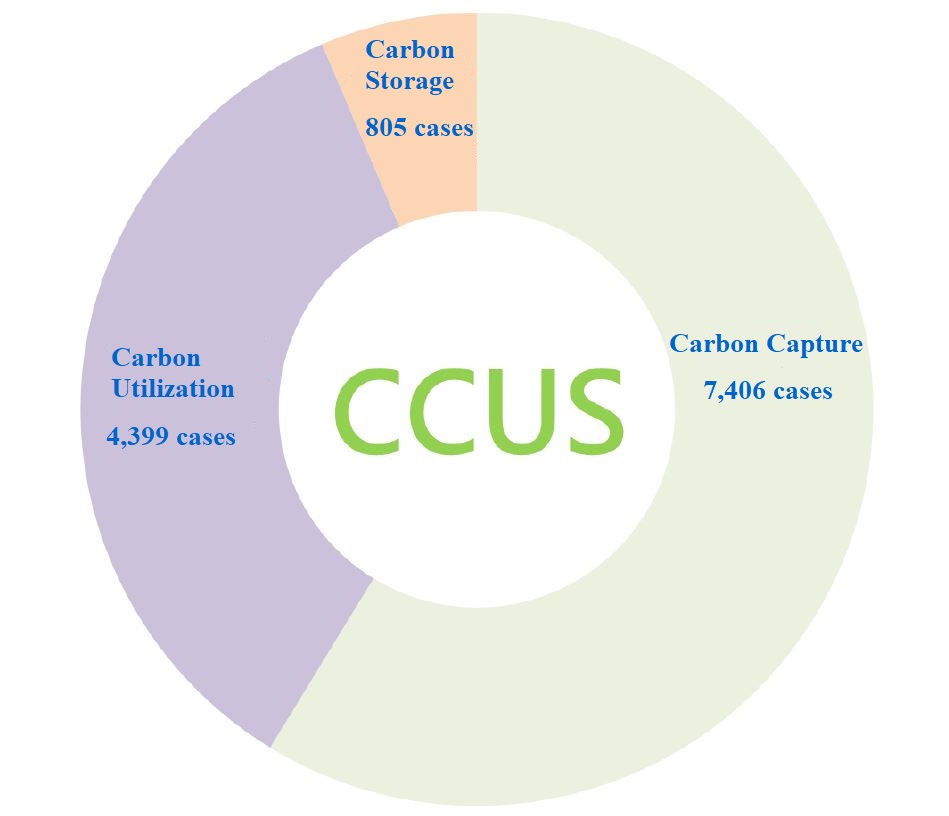 97
97CCUS in 2050 Net Zero Transitions – An Opportunity for Business Growth
Renewable energy plays a critical role in achieving carbon neutrality, and carbon capture, utilization, and storage (CCUS) is considered the final stretch towards net zero emissions. TIPO has compiled an analysis report on CCUS patent application trends and an overview of the patent landscape in this field for public reference.TIPO reports 12,610 global CCUS-related patent technologies (patent families), with 7,406 families in carbon capture, 4,399 in carbon utilization, and 805 in carbon storage – numbers continuously growing as the importance placed on addressing climate change increases. The Office’s analysis of the global patent landscape revealed a correlation between market sizes, level of importance placed on related issues, and number of patent applications. China, Europe, and the United States now have the record for the highest number of applications, most of them being local applications.Carbon absorption is the most prevalent and advanced technology among carbon capture methods, accounting for 39.1% of all related applications. Said method involves capturing carbon dioxide emissions using an absorbent. Adsorption technology, which accounts for 26.7%, is the next most prevalent, utilizing an adsorbent to bind carbon dioxide. Membrane separation technology, accounting for 12.5%, employs a thin film of organic or inorganic material to separate carbon dioxide from other gases. Although absorption technology continues to lead the field, there is an increasing trend in patent applications for adsorption and membrane separation, indicating that various companies and organizations worldwide are exploring a diverse range of carbon capture technologies.TIPO’s report highlights that despite the limited presence of patent applications for carbon capture technology in Taiwan, certain companies and research institutions are actively pursuing research and patenting said technologies. As an example, the Industrial Technology Research Institute and Taiwan Cement Corporation are collaborating to capture carbon dioxide through calcium looping process in order to reduce energy consumption and additional carbon dioxide emissions in the cement production process, demonstrating a leadership role in carbon capture technology.Carbon utilization technology has a broad range of applications, including the conversion of carbon dioxide into chemicals like methanol and methane, and even into novel carbon-based materials such as graphene, carbon tubes, and carbon fibers. Of the various methods for reusing carbon dioxide, the numbers of patent applications for converting carbon dioxide into methanol (11.4%) and methane (8.3%) are relatively high. Major companies, including CPC Corporation and Formosa Plastics Corporation, are investing in such technologies to boost competitiveness in the petrochemical industry. The China Steel Corporation has also leveraged its close proximity to local petrochemical companies and formed partnerships in steel and chemical co-production to optimize carbon capture and utilization/usage (CCU) benefits. Furthermore, with limited R&D in the field of novel carbon materials and a majority of investors being start-up companies, converting carbon dioxide into novel carbon materials could be a potential new business opportunity for SMEs in Taiwan.Applications for carbon storage technologies primarily come from countries or companies that possess oil and gas resources, with 48.1% of the applications focused on the technology of underground injection of carbon dioxide into reservoirs during oil and gas extraction. The implementation of carbon storage technology is limited in Taiwan due to the absence of natural gas or oil production, regulatory hurdles, and the requirement to gain consent from nearby residents for underground injections of carbon dioxide.As of recent, carbon pricing has been skyrocketing, and regulations are becoming increasingly stringent as countries move toward a consensus on reducing carbon emissions. TIPO emphasizes that industries should stay informed about the global CCUS patent landscape and proactively leverage their strengths and resources to research and develop new technologies so as to seize business opportunities in sustainability, leading to a positive impact on both the environment and the economy in the transition to a zero-carbon economy.For related information, please see:https://www.tipo.gov.tw/tw/cp-85-916712-4b1c5-1.html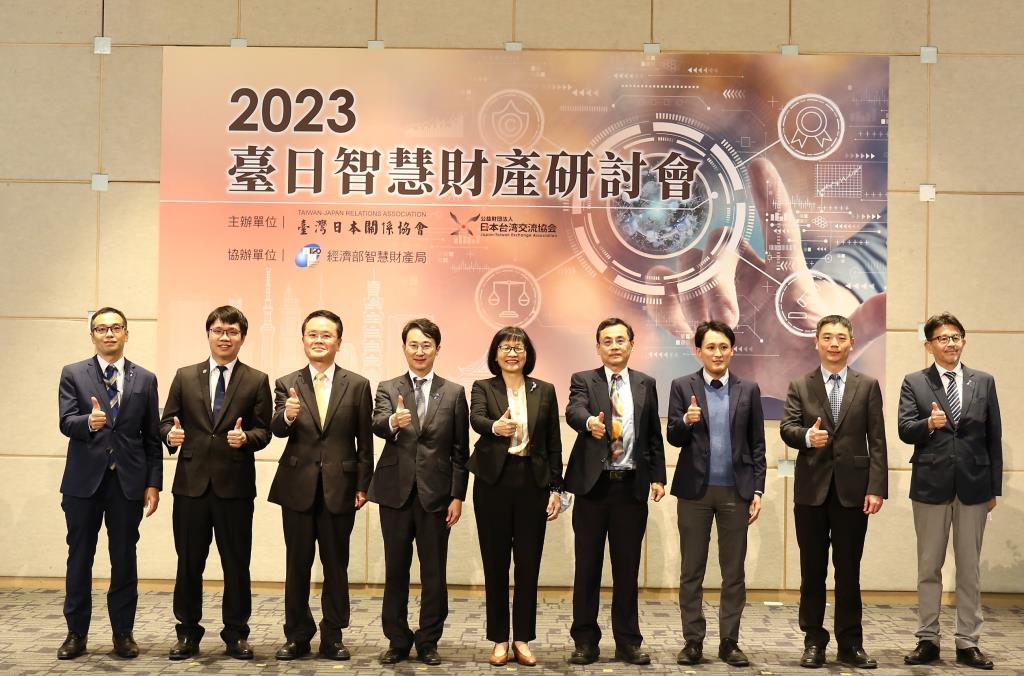 98
98The 2023 Taiwan-Japan Intellectual Property Symposium: A Resounding Success!
The 2023 Taiwan-Japan Intellectual Property Symposium, a collaborative effort of the organizers Taiwan-Japan Relations Association and Japan-Taiwan Exchange Association, in partnership with co-organizer Taiwan Intellectual Property Office (TIPO), was held on January 10th at the GIS MOTC Convention Center. It brought together an esteemed group of guest speakers, including Taiwan-Japan Relations Association Deputy Secretary-General Ching-Hung Lin, Japan-Taiwan Exchange Association Deputy Representative Dr. Takashi Hattori, Taiwan Intellectual Property Office (TIPO) Director-General Shu-Ming Hung, and Japan Patent Office (JPO) Policy Planning and Coordination Department Director-General Mikiharu Shimizu (remarks read on his behalf by Director Tauchi Koji of the Multilateral Policy Office, International Policy Department).The Symposium featured detailed presentations from JPO Multilateral Policy Office Director Tauchi Koji, TIPO International Affairs and Planning Division Director Chi-Hsien Chou, Wisdom International Patent & Law Office Registered Japanese Patent Attorney Kai Furihata, and Jou and Jou Patent Offices Patent Attorney Mike Jou. The speakers delved into the latest developments and initiatives of JPO, offered insights on the patent-related support measures provided by the Taiwanese government for enterprises to develop overseas markets, introduced the nuances of the Japanese invention patent system, and shared actionable strategies for applying and efficiently acquiring Japanese patent rights.Over 110 participants attended the 2023 Taiwan-Japan Intellectual Property Symposium, bringing together industry, government, and academia. The Symposium sparked a dynamic exchange of ideas and insights among participants and experts from both Taiwan and Japan, and fostered vibrant and engaging discussions throughout the event. 99
99Revisions to Part I of the Patent Examination Guidelines Come into Effect on December 1, 2022
TIPO has made revisions to Part I of the Patent Examination Guidelines regarding procedural examination and patent rights management. Main revisions are as follows:I. Chapter 1 - Procedures for Filing Patent Applications and Related Patent MattersElectronic signatures are on the rise. As the documents submitted for patent applications are primarily governed by private law, an electronic signature may be accepted as long as both parties can agree to the validity thereof. TIPO has therefore revised "1.2.4 Signatures for Electronic Documents" to relax requirements for signature formats. The signee only needs to provide a form of signature (whether it be a signature, stamp, or electronic signature) that matches the signature on the application documents.II. Chapter 3 – Patent ApplicantIn accordance with adjustments made to procedural examination, revisions have been made to “3.1 Inventor Change," "4.1 Applicant Name or Title Change," "4.5 Inventor Name Change," and included case studies to help the public better understand the principle of examination. The revisions also specify that applicants who are able to rectify inconsistencies on documents submitted with their applications do not fall under this category. In accordance with a judicial ruling, TIPO also included a case study explanation regarding name changes for different applicants who belong to the same entity.III. Chapter 5 – Filing DateThe establishment of the filing date is closely tied to the patent applicant provided on the application. To clearly stipulate that the cause for decisions on postponement of the filing date, revisions were made to “1.1 Application” for further clarification. The three relevant scenarios were also listed as "Change in Applying Entity," "Addition of Listed Applicants," "Decrease in Listed Applicants.”VI. Chapter 7 – Patent Priority and Grace PeriodAdded an example of incorrect priority document to the “1.5 Documentation and Submission Timelines for Priority.”V. Chapter 8 - Deposit of Biological MaterialsAdded revision to "4. Documentation for Deposit of Biological Materials" stipulating that a depository not an international depositary authority (IDA) under the Budapest Treaty must include viability information as required documentation.VI. Chapter 19 – Change of Patent RightsRevised “6. Recordation of Pledge Establishment ” and “6.2 Requisite Application Documents” in accordance with changes to Article 67 of the Enforcement Rules of the Patent Act announced on October 20, 2022.VII. Other RevisionsRevisions to all other chapters made in accordance with the relevant revisions to official regulations and procedural examination.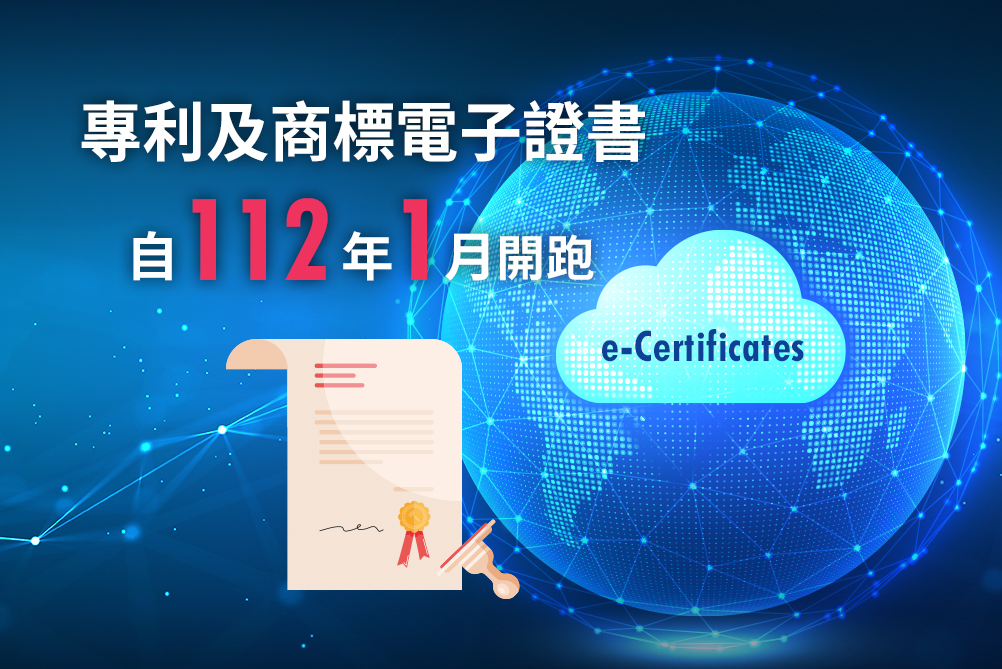 100
100New Upgrades to TIPO’s Digital Services – Online Certificates for Patents and Trademarks Available from 2023
To ensure TIPO offers more comprehensive digital services that better align with global trends, TIPO plans to offer online certificates for patents and trademarks from January 2023. The paperless process will make it more convenient for right holders to obtain and save their certificates, as well as reduce the cost of printing and mailing paper copies – a beneficial step towards achieving sustainable development goals of conserving energy and reducing carbon emissions.For the applicant’s convenience, TIPO will not make online certificates mandatory for all. The applicant may choose either an online or paper certificate when requesting their patent certificate or paying trademark registration fees. Should the applicant require a paper certificate later on, those who choose to receive an online certificate may apply for a paper copy.Upon receiving notification from TIPO that their certificate has been issued, applicants can download the online certificate by entering their verification code at the specified site within six months. Applicants may also obtain their online certificates through the E-SET e-delivery system. Afterwards, applicants will be able to access their online certificates on the e-portal with their digital certificate, under “My Applications.”TIPO's online certificates will be provided via PDF formats for easy circulation. The online certificates will be equipped with anti-counterfeiting measures that require verification and digital signatures, as well as a QR code. Right holders may upload digital files of their certificates onto TIPO's system or scan the QR codes to quickly verify the authenticity of their patent certificates, as well as access any updates to the status of their rights. 101
101Revisions to the Industry Collaborative Patent Interview Pilot Program Will Take Effect Jan 3rd, 2023
TIPO has implemented the Industry Collaborative Patent Interview Pilot Program (hereinafter referred to as "the Program") from November 1st, 2021, to October 31st, 2022. The Program has been well received by the public. To further enhance the process of collaborative patent interviews, TIPO has made revisions to the Program and plans to renew the trial period for another two years. This Program aims to provide applicants with swift and smooth patent rights application experience and assist them in building their patent portfolio. The interviews with applicants allow patent examiners to better understand the application's advanced technical content, thus enabling them to conduct an efficient and high-quality examination. Patent applicants may proactively submit a letter of intent in paper or electronic form. 102
102Patent pledge registration will no longer require a patent certificate, and relaxation of the reasons for applying for the reissuance or renewal of a patent certificate
To relax regulations and safeguard the rights of patent holders and pledgees, revisions were made to the Enforcement Rules of the Patent Act and promulgated on October 20, 2022. The application process for patent pledges have been simplified, and reasons for reissuance or renewal of patent certificates have been relaxed. Highlights of the revisions are as follows:I. Deleted requirement that applicants filing for a patent pledge must include the patent certificate, as well as requirement stipulating that patent pledge information must be included within patent certificate.II. Added “Change in Requisite Information to be Included on Patent Certificate” as a reason for applying for the re-issuance or renewal of a patent certificate. Added the requirement for the Specific Patent Agency to void the original patent certificate upon the re-issuance or renewal of a new patent certificate. 103
103TIPO’s Report on Net Zero Emissions Measures by International CMOs and Music Industries Shares Latest Updates on Carbon Reduction Measures Adopted by Music Industries Abroad!
Climate change and the environment are some of the major issues impacting our generation. As such, TIPO has compiled the Report on Net Zero Emissions Measures by International CMOs and Music Industries focused on efforts by the music industry to combat climate change. The report introduces carbon reduction and net zero emission measures adopted by foreign music industries and CMOs in the fight against climate change. TIPO hopes that by providing a reference for Taiwanese people, our music industries can transition to a more environmentally friendly and sustainable future.The report is available on the official TIPO website under Net Zero Emissions IP Information for public download.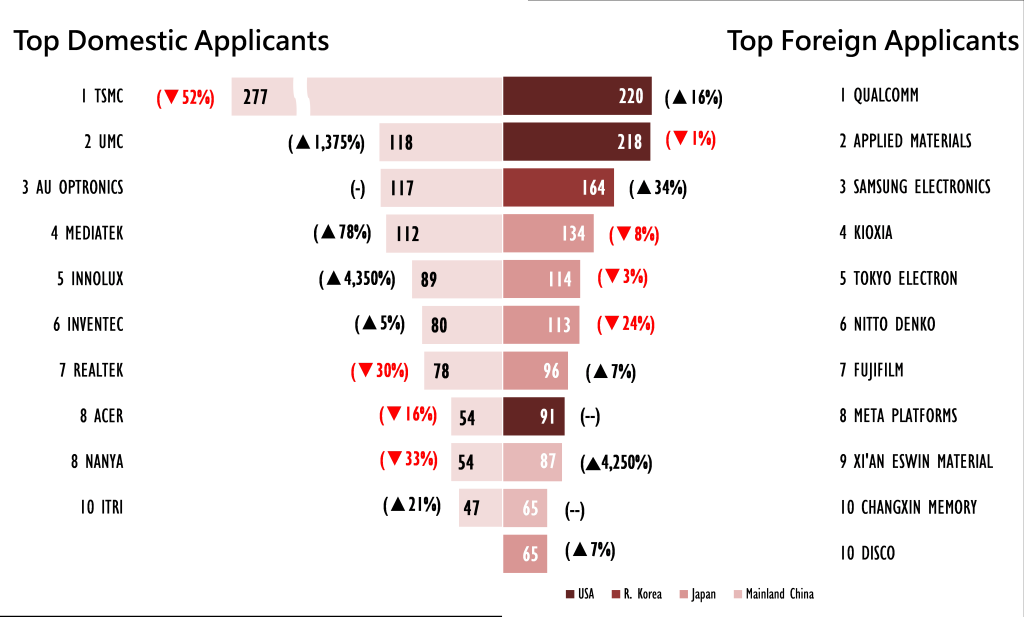 104
104TIPO’s Q3 2022 IPR Statistics Report
In Q3 2022, TIPO received a total of 18,174 patent applications (including invention, utility model, and design patents) as well as 25,310 trademark applications, marking an increase of 0.2% and 2% compared with the same period last year, respectively. Invention patent applications saw a growth of 3%; TSMC, ranking first (277 cases) among resident applicants, outnumbered the others for the seventh year in a row, and Qualcomm (220 cases) led all non-resident applicants. The top 3 industry categories for trademark applications were filed under “Agriculture,” “Business Services,” and “Health.” Most trademark applications filed by residents and non-residents were under “Agriculture” (5,866 cases) and “Research and technology” (1,918 cases), respectively. Uni-President (191 cases) ranked top among resident applicants, whereas Ipplus Technology (150 cases) filed the most applications among non-resident applicants.Patent ApplicationsAmong the three types of patent applications, those for invention patents were the most filed (12,555 cases), marking a growth of 3% over the same period last year (Table 1). The increase was mainly due to the applications filed by non-residents. On the other hand, the number of utility model and design patent applications decreased.The number of invention patent applications from domestic enterprises (3,704 cases) fell by 1%. Of these, the applications filed by large enterprises (3,020 cases) grew by 0.3%, while that of small and medium enterprises (684 cases) decreased.As for resident applications, TSMC filed the most invention patent applications (277 cases), surpassing other domestic applicants for seven consecutive years. The number of applications filed by UMC (118 cases) and Innolux (89 cases) hit their historic highs, seeing a remarkable growth of 13.75 and 43.5 times, respectively, compared to the relatively low applications filed in the same period last year (Figure 2). The former ranked second among resident applicators, the highest position it has ever achieved since TIPO first published its Q3 record in 2012.In terms of design patents, Acer filed the most applications (40 cases) and retained the top spot for two consecutive years. Tarng Yu (15 cases) saw the highest growth rate, with an increase of 150% (Figure 3).Domestic invention patent applications filed by colleges and universities (454 cases) grew by 9%; of these, National Cheng-Kong University ranked first with 36 cases. Research institutions filed 132 applications, and ITRI topped the list with 47 applications. Banks, insurance companies, and securities and futures companies cumulatively filed 62 applications, with Mega International Commercial Bank as the biggest applicant (13 cases).For non-resident applications, invention patents (7,779 cases) grew by 5% compared to Q3 last year and accounted for the majority of all three types of patent applications (Table 1). Among non-resident applicants, Japan led with 2,942 invention patent applications, and those from the USA (1,973 cases), Mainland China (1,006 cases), and R. Korea (689 cases) increased by 9%-36%. As for design patents, Japan also came out on top with 197 applications (Figure 1).As for the top 10 non-resident applicants, Qualcomm led the list of invention patent applicants by filing 220 applications, followed by Applied Materials (218 cases) (Figure 2). Among design patent applicants, Koninklijke Philips ranked first with 49 applications; Apple and Cartier tied for second place, each filing 29 applications (Figure 3).Trademark ApplicationsCompared to the same period last year, trademark applications (25,310 cases) received by TIPO grew by 2%; the number of classes covered (32,105 classes) also showed the same growth rate. The number of resident applications (19,789 cases) was up by 4%, while that of non-residents (5,521 cases) decreased (Table 1) .In terms of the top 5 classes resident applicants filed under, most applications (4,071 cases) were filed under Class 35, “Advertising, Business Management, Retail and Wholesale Services, etc.” The applications under Class 41, “Education, entertainment, etc.” marked the highest growth rate with 18% (Figure 4). Most of the applications of the top 10 applicants increased. Uni-President filed 191 applications, outnumbering all resident applicants (Table 2).Among non-resident applicants, Mainland China filed the most applications (1,153 cases). The applications from Japan (980 cases), R. Korea (472 cases), and Singapore (458 cases) increased; all growth fell in the range of 26%-263%, while those from the USA (808 cases) dropped (Figure 1). In terms of application classes, non-resident applicants filed the most applications (1,089 cases) in Class 9, “Computer and Technology Products, etc.” The applications for Class 3, “Cosmetics and detergents, etc.” saw the highest growth rate with 10% (Figure 5). A first-time applicant, Ipplus Technology, filed 150 applications, outnumbering all other non-resident applicants (Table 3).The top 3 classes trademark applicants filed under were “Agriculture” (6,913 cases), “Business Services” (5,423 cases), and “Health” (4,900 cases). Most applications filed by residents were under the class “Agriculture” (5,866 cases), the majority of which were for the restaurant and accommodation industries. On the other hand, most non-resident applications were filed under “Research and technology” (1,918 cases) (Figure 6).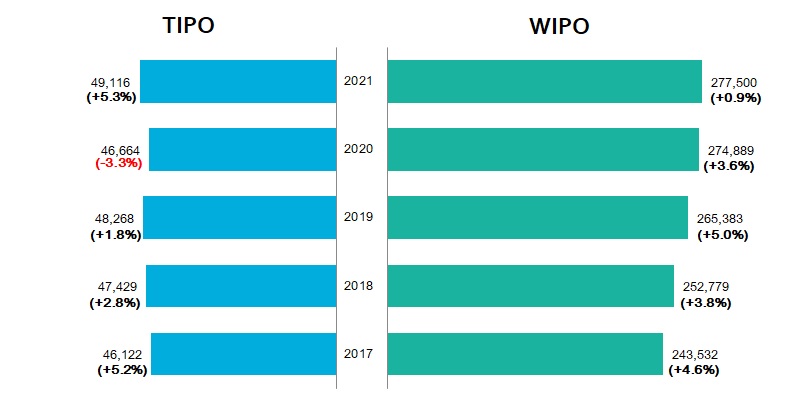 105
1052021 Comparison of Trends in Invention Patent Applications in Taiwan and WIPO PCT Applications
In 2021, TIPO received 49,116 invention patent applications, while WIPO received an estimated number of 277,500 international patent applications (PCT applications) filed under the Patent Cooperation Treaty (PCT). Of Taiwan’s invention patent applications, semiconductors (6,360) and computer technology (4,283) took the top 2 spots among 35 technology fields. However, computer technology (26,092) remained the main technology field among WIPO PCT applications, while semiconductors (8,346) ranked 10th. As for applicants, TSMC and Huawei took the lead in Taiwan and WIPO PCT applications, respectively. Moreover, Qualcomm and Samsung Electronics were both among the top 10 applicants in Taiwan and WIPO PCT applications.Invention applications rebounded in Taiwan while WIPO PCT applications maintained a modest growthOverall invention patent filings in Taiwan rebounded with an increase of 5.3% in 2021, following the decline in 2020 brought on by a drop in non-resident filings due to the COVID-19 pandemic. On the other hand, WIPO PCT applications grew by 3.6% in 2020, attributable to the surging growth in applications from China. However, the number of applications decreased in March and from September to year-end, seeing a slight yearly increase of 0.9% overall (Fig. 1, Fig. 2, and Fig.3).Taipei-Hsinchu accounted for 56.3% of resident invention applications in Taiwan in 2021Applicants residing in Hsinchu City filed the most applications in 2021, at 4,711, followed by applicants from Taipei City (3,282) and New Taipei City (3,007). The top three cities combined accounted for 56.3% of all applications filed in 2021, up by 6.2 percentage points compared to 2017. On the other hand, Hsinchu City saw the fastest growth (+23.3%) in 2021, followed by Hsinchu County (+7.9%) and New Taipei City (+1.6%) (Fig. 4).Semiconductors and computer technology took top spots in Taiwan and WIPO PCT applications, respectively, in 2021In 2021, semiconductors (6,360, +19.6%) topped the technology fields of invention patent applications in Taiwan, while the field of computer technology had the most WIPO PCT applications published (26,092, +7.2%). Both the top ten technology fields in invention applications in Taiwan and WIPO PCT applications included semiconductors, computer technology, electrical machinery, audio-visual technology, measurement, and pharmaceuticals (Table 1).Furthermore, semiconductors topped all technology fields, accounting for 12.9% of invention applications in Taiwan in 2021 but ranked 10th with a share of 3.2% in WIPO PCT applications. This indicates that Taiwan remains outstanding in the semiconductor industry. On the other hand, digital communication and medical technology claimed two out of the top three spots in WIPO PCT applications. However, they were not among Taiwan’s top ten technology fields of invention applications.Health-related technology fields grew both in Taiwan and in WIPO PCT applications, with pharmaceuticals reporting the fastest growth in 2021In Taiwan, pharmaceuticals rose by 26.3% in 2021, followed by biotechnology (+19.1%), while medical technology remained stable (-0.1%) after a surge in 2020. As for WIPO PCT applications, pharmaceuticals also had the fastest growth of 12.8% in 2021, followed by biotechnology (+9.5%) and medical technology (+6.0%) (Table 1, Fig. 5).Certain top filing countries (regions) that mostly filed invention applications in semiconductors, computer technology, or organic fine chemistry in Taiwan primarily filed WIPO PCT applications in computer technology, digital communication, or electrical machineryFor invention applications received by TIPO, Taiwan, Japan, the U.S., and the Republic of Korea filed the most applications in semiconductors (shares of 12.0~18.3%). On the other hand, computer technology accounted for the largest proportion of applications (13.9%) for Mainland China, while Germany filed the most in organic fine chemistry (11.6%). The top three technology fields of the two aforementioned countries (regions) did not include semiconductor (Table 2).WIPO PCT applicants from Mainland China (a share of 15.6%) and the US (12.4%) filed more applications in computer technology; those from Japan and Germany filed intensively for patents related to electrical machinery (10~11%). The top technology field in R. Korea was digital communication (11.5%). The top three technology fields of these countries did not include semiconductor (Table 2).TSMC led in the number of invention patent application filings in Taiwan, while Huawei remained the top filer of WIPO PCT applications in 2021As regards invention applicants in Taiwan, TSMC (1,950) filed the most applications in 2021, followed by Qualcomm (845) and Applied Materials (758). Industrial Technology Research Institute (ITRI), coming in tenth, is the only research institute among the top 10 applicants. The top 10 WIPO PCT applicants were all businesses. Of them, Huawei topped with 6,952 WIPO PCT applications published in 2021, followed by Qualcomm (3,931) and Samsung Electronics (3,041); the latter two both claimed top 10 spots in Taiwan as well (Fig. 6).Seven of the top 10 applicants in Taiwan were also top filers in the field of semiconductors, while most top 10 WIPO PCT applicants had the greatest shares in digital communicationSeven of the top 10 applicants in Taiwan (Fig. 6), TSMC, Qualcomm, Applied Materials, Samsung Electronics, Tokyo Electron, AU Optronics, and Kioxia, are also among the top 10 applicants in semiconductors. Furthermore, TSMC, Applied Materials, ASML, and AU Optronics claimed the top in computer technology, electrical machinery, optics, and audio-visual technology, respectively (Table 3).Six of the top 10 WIPO PCT applicants filed most applications in digital communication, including Telefonaktiebolaget LM Ericsson, Huawei, Guang Dong OPPO Mobile, LG Electronics, Qualcomm, and Samsung Electronics. On the other hand, Mitsubishi Electric had its largest share in thermal processes and apparatus, BOE Technology filed intensively in semiconductors, Panasonic Intellectual Property Management filed mainly in electrical machinery, and Sony filed most in computer technology (Fig. 7). For more information (in Mandarin), please visit https://www.tipo.gov.tw/tw/cp-174-219414-a1c98-1.html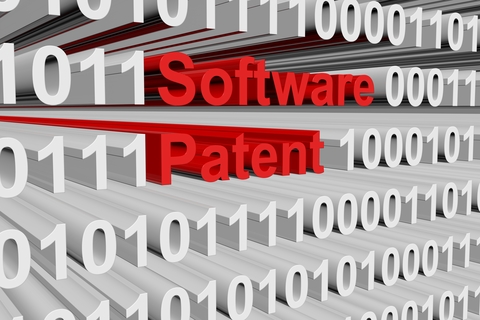 106
106TIPO Publishes English Version of the “Patent Examination Guidelines, Part II: Substantive Examination for Invention Patents, Chapter 12 Computer Software Related Inventions”
TIPO has released its English version of the “Patent Examination Guidelines, Part II: Substantive Examination for Invention Patents, Chapter 12 Computer Software Related Inventions.” This should help to enhance the international IP community’s understanding of Taiwan’s patent examination process of computer software related inventions and improve services provided to foreign applicants of computer software related inventions. Those interested are welcome to access the Guidelines below.Click the attachment below to download the “Patent Examination Guidelines, Part II: Substantive Examination for Invention Patents, Chapter 12 Computer Software Related Inventions.” 107
107TIPO has Added a New Chapter on “Green Industries” to the Industry Trademark Application Strategy Manual for Designated Goods and Services in Response to Goals to Reach Net Zero by 2050
The Executive Yuan has passed amendments to the Greenhouse Gas Reduction and Management Act on April 21, 2022. The Act has been renamed the “Climate Change Response Act,” and officially declares net zero emission of greenhouse gases by 2050. The specific approach targets greenhouse gases from the manufacturing, transportation, agricultural industries, as well as from residential activities and utilizes negative carbon technology (carbon capture, storage, and reuse) and natural carbon sinks (forests and ocean sorption) to balance carbon emissions in order to reach net zero emissions. TIPO has added the “Green Industries” chapter to the Industry Trademark Application Strategy Manual for Designated Goods and Services, and the chapter is divided into six fields: “Green Energy,” “Clean Energy Transportation,” “Carbon Rights, Carbon Economy and Related Commercial Trading of Electricity,” “Pollution Treatment and Reutilization,” “Green Buildings to Zero-Carbon Buildings,” and “Green Industry-Related Certification Mark, Certification Process Guidance, and Educational Training.” This distinction will help industries understand the scope of trademark rights they should get to protect their businesses, make the right choice of designated good or service when registering a trademark, and cross-reference the goods and services listed in the NICE classification for their industry. The Industry Trademark Application Strategy Manual for Designated Goods and Services is available for public reference.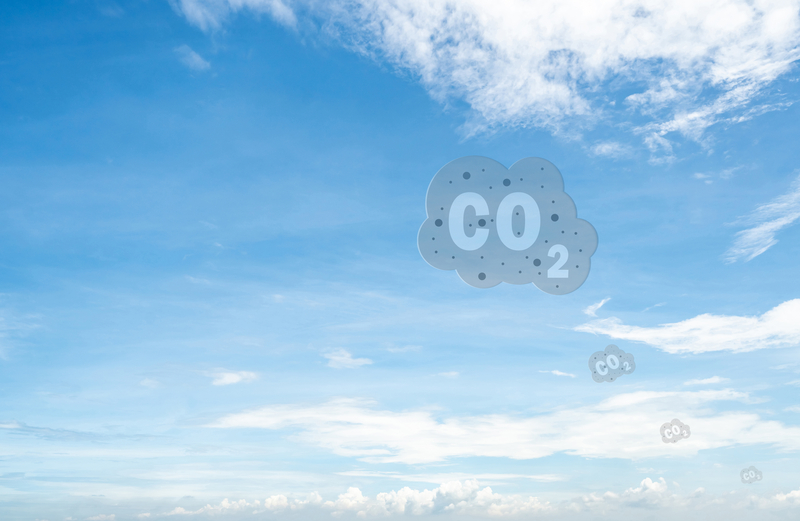 108
108“Patent Trend Analysis of International Carbon Capture Technology” is now Available on the TIPO Website for Public Reference
To help businesses better understand the global patent trends in Carbon Capture, Utilization, and Storage (CCUS), TIPO has compiled graphics on the Patent Trend Analysis of International Carbon Capture Technology based on the three major themes of CCUS and according to the international patent classification (IPC) on carbon capture and sequestering, which were established in the 2010 WIPO IPC Green Inventory. The analysis also refers to the relevant classifications and key words in the Cooperative Patent Classification (CPC). TIPO used Derwent Innovation to compile patent information laid open/published by various countries before the end of December 2021 and conducted overall patent analysis, analysis of relevant technology patents, global flow of applications, and analysis of major patent offices. The full report is expected to be completed by the end of this year and shall be published on TIPO’s website.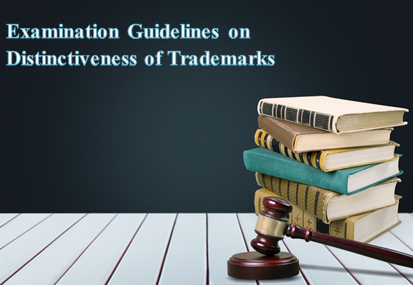 109
109Revisions to the Examination Guidelines on Distinctiveness of Trademarks Were Promulgated on July 26, 2022, and Will Take Effect on September 1
To enhance the examination principles for distinctiveness of various types of trademarks, TIPO has promulgated revisions to the Examination Guidelines on Distinctiveness of Trademarks. TIPO has provided examples for different types of trademarks and ensured that the basis on which distinction is determined for trademarks aligns with current market transactions. Main revisions are as follows: I. Made adjustments to the different composition patterns of foreign alphabets; provision of reference examples for determining whether descriptions are designed and distinctive. II. Added assessment criteria and example explanations for “alphanumeric combinations” and “numbers” in response to differences in use between various industries. III. Added following categories with examples: “popular graphics,” “purely informational graphics,” and “commercial design graphics.” IV. Added criteria for country names, geographical images, and geographical names used in descriptions of product origin, as well as misleading use or misrepresentation thereof for product origin. V. Added assessment criteria and reference examples for names and portraits of well-known public figures who are recently deceased; to further exemplify what constitutes a “portrait,” additional cases for reference are also provided. VI. Added determining criteria for religious images and terms; added examination principles for marks related to traditional and cultural activities. VII. Revised criteria for slogans, common words, new terms, and technical terms, and adjusted the examination guidelines for “idioms.” VIII. Trademark graphics which include “the full name of the company” or “domain names” are considered strictly informational in order to prevent affecting the certainty of the scope of trademark rights and the function of correctly indicating the source of the product or service in the event that trademark rights are transferred or there is a change of name after registration.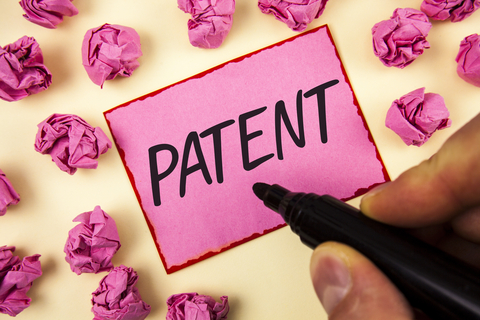 110
110Revisions Have Been Made to Chapters 3, 6, 7, 8, 9, and 14 of Part II “Substantive Examination for Invention Patents” of the Patent Examination Guidelines, Which Take Effect on July 1, 2022
To reflect the practical needs of patent examination, TIPO has added new examination criteria and notes to the Patent Examination Guidelines, which include two applications (invention and utility model) for the same creation, disclaimers, final notice limitations, and deposit of biological materials. TIPO hopes to enhance the quality of patent examinations by providing unified standards. Main revisions include the following: I. Part II Chapter 3 “Patentability” Additional paragraphs 5 and 6 have been added under “5.7.2 Notes for Examination” for when two applications (invention and utility model) are filed for the same creation. Specifically, it details examination principles for the invention application if – during the examination of the invention patent, or after approval but before invention published – the utility model application is invalidated but has yet to be final and binding. II. Part II Chapter 6 “Amendments” Under “4.2.2 Permissible Omissions,” in the event that the applicant amends the claim by negative limitations to exclude any overlap with prior art (disclaimers) before the issuance of an office action from the patent examiner, the applicant should still provide the patent examiner with prior art documentation and an explanation for further assessment. If no such documentation is provided, the application is deemed to introduce new matter. Exceptions are made for applications where prior art is already disclosed in the descriptions, patent claims, or drawings of the original application as filed. III. Part II Chapter 7 “Office Action and Final Decision” Under 3.1.2 “Reduction of Patent Claim Scope,” stipulations in paragraph 6 that require “partial deletion of cited or dependent claims and a breakdown of remaining claims” have been moved to the newly added paragraph 7. It also states that besides the aforementioned situation, the additions of new claims are not included within the “reduction of patent claim scope” referred to in the revision limitations of the final notice. IV. Part II Chapter 9 “Corrections” Under “6. Notes for Examination,” patent examination principles have been added with regard to negative limitations to exclude any overlap with prior art (disclaimers) in accordance with revisions to chapter 6. V. Part II Chapter 14 “Biology-Related Inventions” A new paragraph (3) has been added to “4.2.4 Notes for Deposits” which stipulates that the applicant, in accordance with the provisions of Article 27 Paragraph 5 of the Patent Act, should include documentation proving that biological materials deposited in a depository designated by a foreign country in its territory exist and are viable. VI. Other Revisions Other revisions include changes to the wording to reflect new regulations, as well as to ensure consistency and prevent misrepresentation within all chapters. Link: Revisions to Chapter 3, 6, 7, 8, 9, and 14 of Part II “Substantive Examination for Invention Patents” of the Patent Examination Guidelines (Mandarin)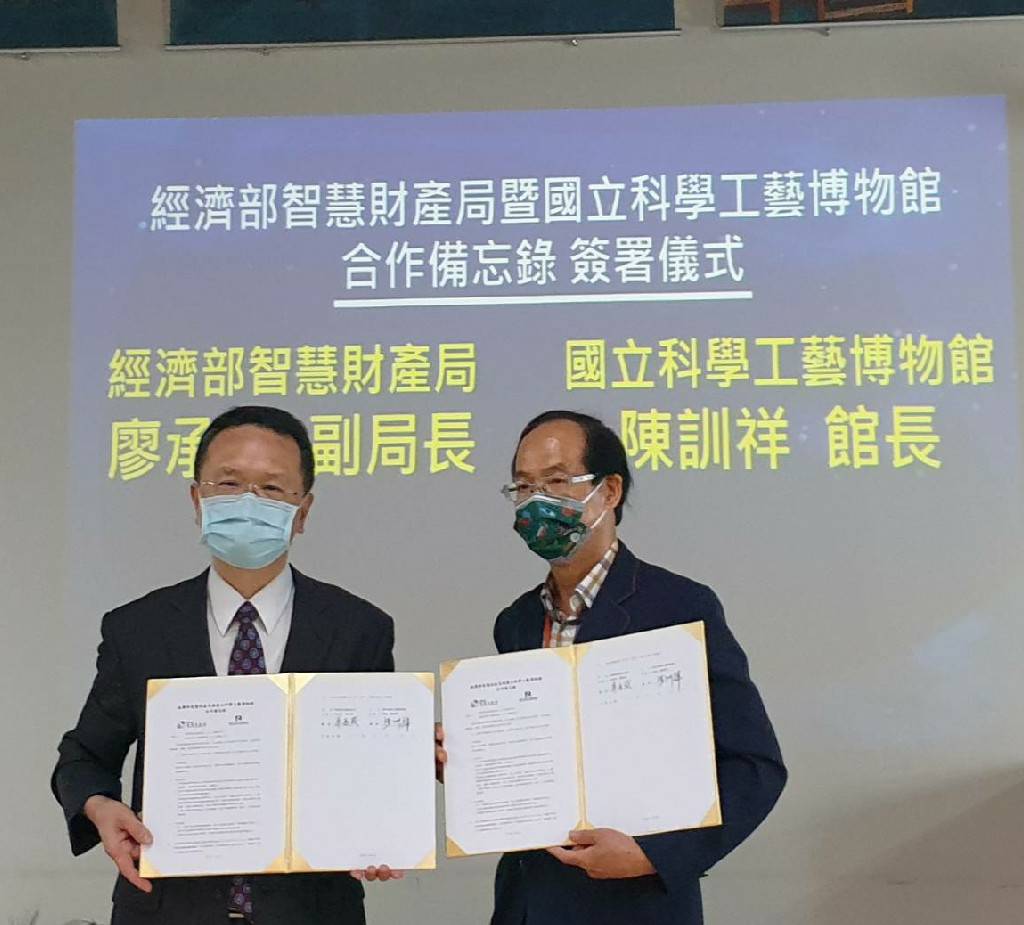 111
111TIPO Signs MOU with the National Science and Technology Museum (NSTM) and Organizes the “Rising Stars in Invention” Special Exhibition
On June 24, 2022, the Taiwan Intellectual Property Office (TIPO) of the MOEA signed an MOU with the National Science and Technology Museum (NSTM). The event was witnessed by an inventor who represented recipients of the National Invention and Creation Award. TIPO and NSTM shall collaborate on the donation, collection, exhibition, advocacy, education, and promotion of award-winning entries for the National Invention and Creation Award to preserve important artifacts and maintain a record of the timeline for national inventions and creations. TIPO also hopes this will provide public service and education by facilitating the collection and exhibition of artifacts. The “Rising Stars in Invention” Special Exhibition was also held on the same day.The NSTM is located in Kaohsiung and is Taiwan’s first applied science museum. The NSTM is also one of the six museums under the management of the Ministry of Education. Therefore, in addition to preserving artifacts, it also bears the responsibility of promoting education. NTSM’s partnership with TIPO began in 2014 when they co-organized the donation and collection of award-winning entries for the National Invention and Creation Awards. Over 90 entries in 49 categories have been collected through 8 years (and four competitions) of effort. The official signing of the MOU will serve as a basis for the systematic collection of outstanding Taiwanese inventions and creations.The name of the exhibition, “Rising Stars in Invention,” compares the brilliance of each award-winning recipient and entry of the National Invention and Creation Award to that of a new star that shines a light into our lives. The hope is also that future inventors may visit the exhibit and become rising stars in the field of invention themselves. The exhibit is divided into five major areas: “Inventions are Everywhere,” “The Devil is in the Details,” “We Want You!,” “Creative Invention Mindset: TRIZ,” and “Classics for Posterity,” allowing visitors to view and experience excellent and representative inventions and creations up close. The exhibition is open until August 21, 2022, and all interested are welcome to visit Kaohsiung.The “Rising Stars in Invention” Special Exhibition is the first exhibit of its kind curated from award-winning entries and organized by TIPO and NSTM. Both shall continue to collaborate in the future and tap into their individual core strengths and advantages to collectively promote outstanding inventions and creations – ensuring widespread and comprehensive development for innovative technology and education.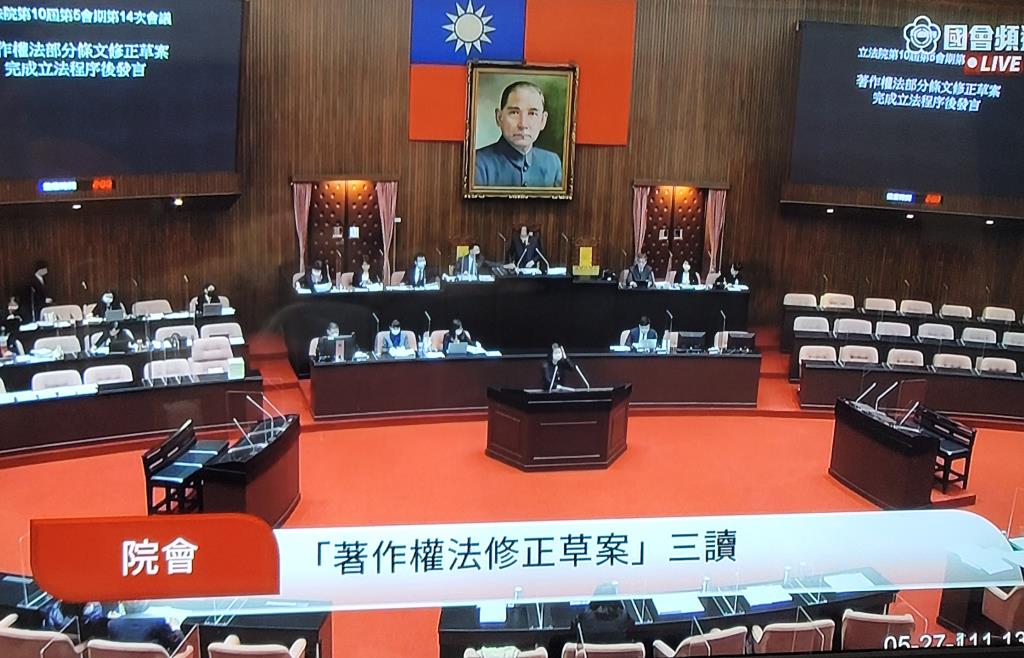 112
112Partial Draft Amendments to the Copyright Act Passes Third Reading at Legislative Yuan to Meet Distance Learning Needs
In response to current technological developments, educational policies, and pandemic measures, the Legislative Yuan passed partial draft amendments to the Copyright Act by a third reading on May 27. The amendments target aspects of distance learning as an extension of the classroom, such as the rules for fair use of copyrighted works, allowing teachers to provide classroom instruction without worry. In accordance with digital education policies, the amendments also allow textbook preparers to transmit digital copies to teachers and students to promote the use of e-schoolbags and alleviate the burden of heavy backpacks for students. Additionally, to facilitate the cultural development of Taiwan, the amendments also enable the National Central Library (NCL) to digitally reproduce its collection, under certain conditions, for readers to access online within the library.Main amendments include:1. Fair use of copyrighted works by schools for registered students during distance learningCurrent law only allows teachers to print and distribute – to a reasonable scope – copies of copyrighted works to students during class. In response to technological developments and to ensure that teachers can provide remote education as they do in the classroom, the amendments stipulate that – within the necessary scope of classroom instruction – teachers may offer reference materials or information to students online. The amendments come in response to distance learning needs after school shut-downs due to the pandemic and aim to make education more effective, as well as to align with international and technological development trends.In addition, to avoid excessive infringement of copyrights, schools are required to take reasonable technical measures (e.g.: account passwords) to prevent students not taking the class from accessing the courses. Because remote education is instrumental to public interest, school teachers are exempt from obtaining paid authorization for the use of copyrighted works in their lessons to ensure that teaching activities can resume unimpeded. (Article 46)2. Not-for-profit remote education may use copyrighted works and are required to pay remunerationWith regard to remote education directed at the general public (e.g.: not-for-profit MOOCs education platform eDX, etc.,), current law only regulates television-based education like that of open universities and does not include rules for the fair use of copyrighted works for online education. As such, amendments were drafted to regulate the fair use of copyrighted works by educational institutions or schools for the purpose of distance online learning. Because use may vary from traditional and tv broadcasts to synchronous or on demand online transmissions, and the courses are aimed at the general public – a broader and different base than the aforementioned registered students – these institutions must still pay for copyright authorization within the necessary scope of education to ensure the rights of copyright holders.As for-profit distance learning activities (e.g.: online education provided by cram schools, etc.,) are not directed at public interests, the amendments stipulate clearly that paid authorization is required for use of copyrighted works to protect the rights of copyright holders. (Article 46-1 )3. Textbook preparers may transmit digital copies to teachers and students to meet the need for e-schoolbagsCurrent regulations stipulate that although textbook preparers may use copyrighted works to examine or compile textbooks, they may only provide paper copies of textbooks to teachers and students, which is unable to meet the need for e-schoolbags for students in the digital era. Therefore, amendments were drafted to allow textbook preparers to digitally transmit textbooks under reasonable conditions. In order to ensure the rights of copyright holders, remuneration must be paid for the authorized use of copyrighted works for the aforementioned situation. (Article 47)4. The National Central Library (NCL) may create a digital collection that is only accessible to visitors on the library's intranetWith the aim to facilitate cultural development with the National Central Library, the amendments allow NCL to digitally reproduce its collection in advance as a precaution against damage or loss, so that contemporary works may be better preserved at the NCL. Another amendment stipulates that the NCL and other library institutions may, under certain restrictions, allow readers to access the digital collection via computers within the libraries, in lieu of lending or allowing physical access to the original paperback. The amendments not only aid in the digitalization of library services but also facilitate the preservation of physical library collections. (Article 48)The MOEA emphasizes that digital development facilitates the diversified use of copyrighted works. The world has been impacted by the global pandemic in recent years and as such, distance learning has become an important form of education. The amendments were drafted in response to technological developments that facilitate educational instruction, the use of e-schoolbags, and the need for libraries to preserve their collections and provide digital services. These amendments to the Copyright Act – approved by the Legislative Yuan – align with Taiwan’s current need for digital education policies, promote development of diverse educational modes, and hold profound significance for the distribution of knowledge. 113
113Seminar on IP Landscape in New Southbound countries
To actively assist Taiwanese companies in building IP portfolios in New Southbound countries, on August 27 (Tuesday) and 28 (Wednesday), 2019, TIPO will hold a seminar on IP Landscape practices in New Southbound countries with Taiwan Patent Attorneys Association (TWPAA) at Tsai Lecture Hall, College of Law, National Taiwan University in Taipei.The seminar has the intellectual property office officials and patent attorneys of Malaysia, the Philippines, Thailand, Vietnam, Indonesia, and India as guest lecturers. They will speak about the invention patent and utility model patent systems (such as application requirements, the time limit for OA response, and patent term), patent examination practices, and the things to note when filing applications and protecting patents for Taiwanese companies in New Southbound countries. IPR can protect a company’s business achievements while generating more value for the company. When entering the local market of a New Southbound country, if using the country’s IPR system properly and setting appropriate IP portfolio strategies, the company shall be able to leverage its advantages more. TIPO expects the seminar to help attendants learn more about the IPR practices in New Southbound countries.For more information, please keep a close eye on TIPO’s website and our Facebook fan page.

 Sitemap
Sitemap FAQs
FAQs Feedback
Feedback Bilingual Glossary
Bilingual Glossary